Kevin and I have learned in our travels that we definitely prefer sightseeing that involves being outside. Nothing makes me cranky like spending hours at a museum that is dimly lit and packed full of tourists. In fact, on the rare occasions when we DO visit a museum, we spend a couple hours researching online to figure out the least busy time to visit. Also, we never go to a museum without an emergency chocolate bar on hand. What can I say? We know ourselves very well now.
So we were excited about a couple day-trip-worthy destinations within a stone’s throw of Florence that were entirely outdoor affairs. Pisa, home of the iconic Leaning Tower, is definitely worth the trip. The other destination we visited was Lucca, a charming little town surrounded by an entirely intact medieval wall.
There are other Day Trips from Florence we would’ve liked to do, like a visit to Siena or a trip down to Orvieto, but we decided to avoid charming-medieval-town-fatigue and hit those on a trip in the future. Plus, we’d love to come back in the fall to see Tuscany when the trees are starting to show their Autumn colors!
Pisa: More than Just a Tower
Contrary to what I’ve thought my entire life, Pisa is SO much more than just its Learning Tower! If you have the time, consider spending a night in Pisa like we did. We arrived late in the evening, had a nice dinner, and were able to visit the Leaning Tower in the morning before all the tour busses and huge groups arrived at around noon. It was amazing how much busier things were at noon than they were at just 11am! Totally worth the overnight to avoid the crowds.
In addition to crowd avoidance, staying overnight lets you give the city the time it deserves. The beautiful Arno River runs right through Pisa, and has a river promenade that is perfect for a relaxing stroll.
If you happen to be in Pisa on a Sunday, the streets will likely be lined with lots of people selling crafts and homemade goods!
Pisa is a fun city to explore and get lost in, and had so much more character than I expected:
- One of Pisa’s cute shopping streets.
- Cute, winding streets in Pisa.

This mural in Pisa is called Tuttomondo (Whole Wide World), and was painted in 1989 by Keith Haring, an American artist. He brought NYC graffiti in to the world’s mainstream. Amazingly, it’s still in great shape all these years later.
While you’re in Pisa, though, you MUST visit the iconcic, touristy Leaning Tower of Pisa. The Tower is part of a much bigger complex called the Field of Miracles, which also consists of a beautiful Duomo (Cathedral), a Baptistry, a hospital-turned-museum, and the Camposanto Cemetery. (Fun fact: the Tower is actually the Duomo’s bell tower!)
The only site at the Field of Miracles that you can enter for free is the Duomo. It’s totally worth having a peek:
It costs a whopping 18 euro to climb the Leaning Tower. We didn’t go up because I think the outside is pretty darn impressive itself. Be warned, you should definitely reserve Tower tickets online a couple weeks in advance if you want to do the climb. Without reservations, you reportedly might have to wait up to 3 hours in peak Summer season to go in!
Unbeknownst to me, the Tower has an incredibly interesting backstory. It was built over two centuries by at least three different architects. Construction was first started back in 1173. Just five years later, construction on the Tower’s base and first level arcade was finishing up when someone said, “Um guys, do you think the Tower is leaning?”.
Turns out that some genius thought a 13-foot deep foundation would be sufficient for the behemoth Tower, but boy were they wrong! The marshy, unstable soil at the Field of Miracles proved to be a challenge to all of its buildings. The Baptistry and Cathedral both have noticeable leans, as well.
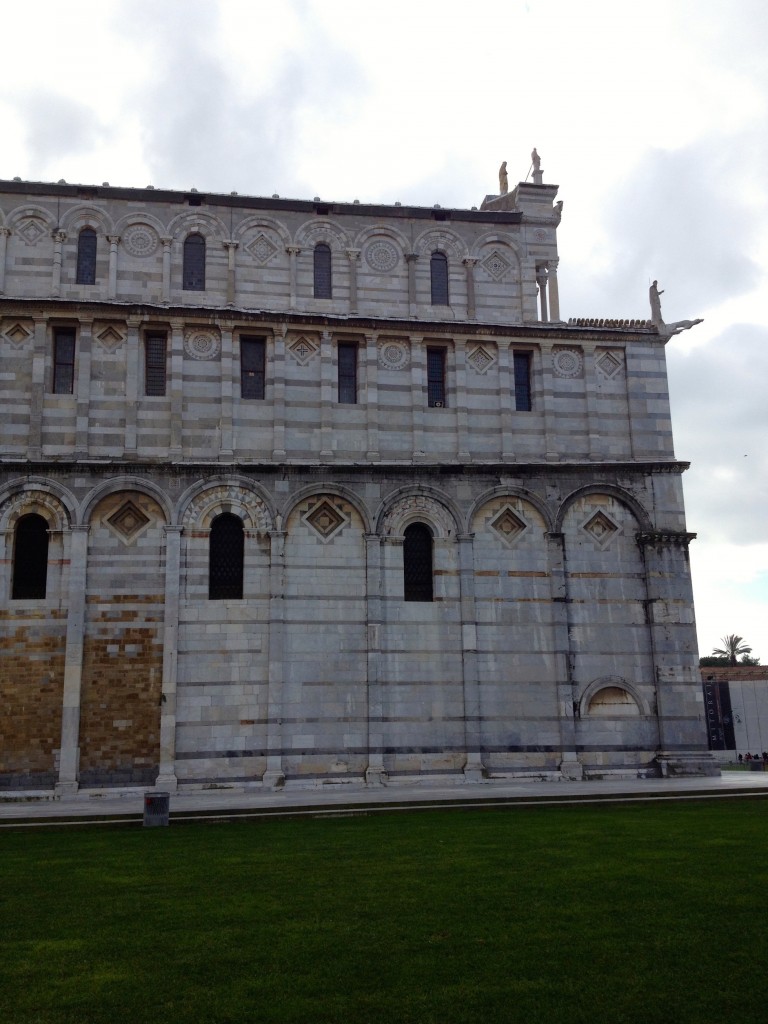
Can you see how asymmetrical the back of the Duomo is? Over the years, repairs have been made to correct leaning.
Undaunted by the Tower’s noticeable lean, construction continued until the first four stories were finished. After that, construction was mysteriously halted for 100 years. Around 1272, another architect gave things a go, making an effort to correct the lean by angling the next three stories away from the Tower’s lean direction. This was apparently not a winning effort, because the Tower again sat idle for almost another century.
Finally, the last architect to work on the project, Tommaso Pisano, built a belfry on the top, again kinking it even further away from the direction of the Tower’s lean. The Tower was finally completed, but its lean was getting worse every year. Efforts to stop the lean were ongoing for hundreds of years until 1550 when efforts to reinforce the base kept the Tower’s lean from increasing any further.
Unfortunately, in 1838, engineers made a huge mistake and destabilized the tower when they were pumping out groundwater under the Field of Miracles. The Tower’s lean began to accelerate once again, and the beautiful structure was in jeopardy. In 1990, the problem was solved once and for all. It was closed for repairs, and a whopping $30 million was spent on restoration. Several unsuccessful attempts were made to halt the lean: engineers tried drying the soil with steam pipes (with no luck), used steel cables to anchor the Tower to the ground (nope), and even buried 600 tons of lead on one side of the tower as a counterweight to stop the lean (still no success).
Finally, the engineers tried sucking out 60 tons of soil from under one side of the Tower, which allowed it to sink further into its correct position and decrease its lean. I can picture the conversations between engineers on the soil-sucking day: “You double checked the math, right?” “Yes, but perhaps we should stand back.”
With a price tag of $30 million just for recent repairs alone, I can start to understand why it costs so much to go inside.
The history of the Tower is pretty neat, but honestly I think the best part of seeing the Leaning Tower of Pisa is taking out-of-context photos of people who are doing the classic I’m-propping-the-tower-up-with-my-hands pose. Here’s a gallery of some of my favorite photos doing just that (click to enlarge):
- This lady is crazy!
- Good form, sir!
- Nice one, ma’am!
- I once caught a fish that was thiiiiiiiiiis tall!
- I call this one “man in yellow flagging down a taxi”
- This guy looks like he’s busting out some of my family’s signature dance moves. I like it.
- There was an ambulance sitting nearby on standby – I think it’s probably for all the people who fall when they’re trying to stand on these pillars!
- This silly guy!
- This kid’s mom knew what was up – she is standing by just waiting for her to fall off!
- Leeeeeeeeeaaaan!
- There is so much going on in this one on the left half. It takes a village to take this photo.
- Kisses!!!!!!!!
- Dancing Queen!
- I will kick this tower down with my feet!!
- Hugs!
- Accidents waiting to happen!
- Guy squatting on the left: you’re doing it wrong!
- Squatter holding the tower?
- Those are some sassy tower poses right there.
- More tower poses.
- This one’s actually not that bad.
- I call this one “mime-can’t-get-out-of-her-box”.
Have you been to see Pisa’s leaning tower? Are you in one of my spoof photos? Leave us a comment and let us know!
Lucca: Italy’s Most Impressive Fortress City
Lucca is a small, quaint, unassuming town in Tuscany. Without any one big draw, it doesn’t get a ton of tourist action. But the reason you travel to Lucca is to relax, take in the beautiful scenery, enjoy the cute old buildings (which are surprisingly intact, because this city has never been bombed), and walk its impressive medieval wall.
We took the short train ride from Florence to Lucca, and walked into town. First, we had to cross a formidable moat:
Arguably the most fun thing to do in Lucca is walk its wall. It’s a short 2.5-mile-long walk, and the views you earn are gorgeous. Some photos from our wall walk:
After walking the wall and getting your bearings, it’s fun to just explore the cute winding streets of the old city area inside the wall. You’ll stumble onto a different church every few blocks, wander past bakeries and gelaterias, and see lots of cute little stores.
- Lucca’s Church of San Frediano, built in 1112. Check out the elaborate mosaic facade!
- The beautiful wood-beamed interior of the Church of San Frediano.
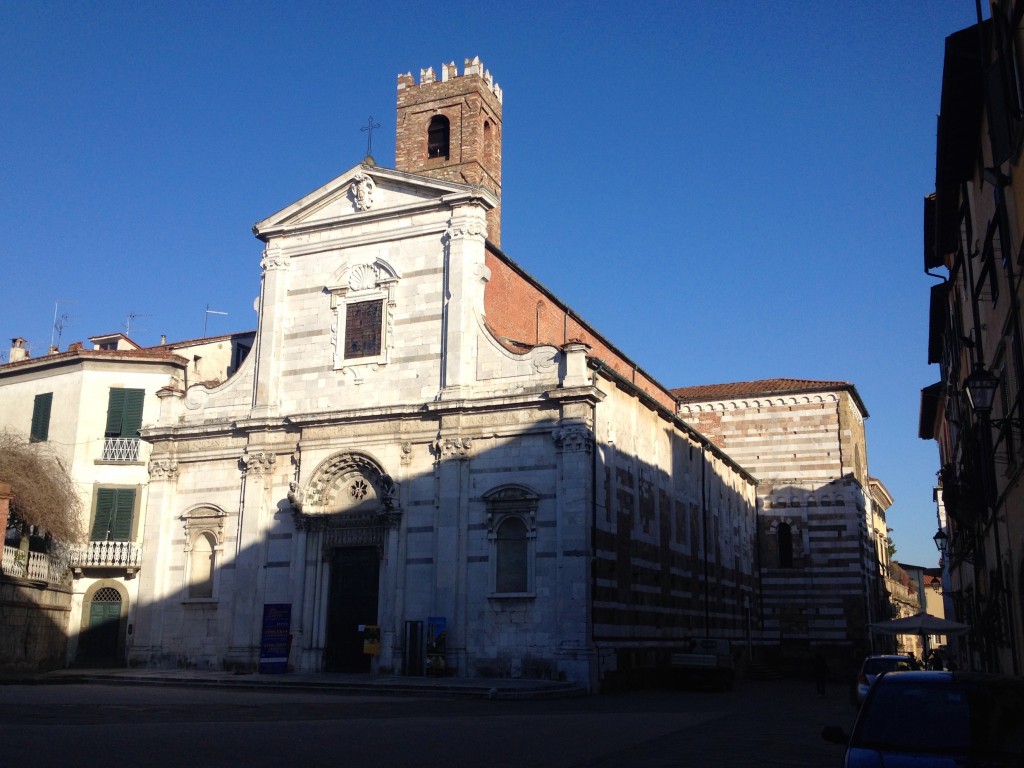
This is the San Giovanni Church, the first cathedral of Lucca. The entire floor has been excavated to reveal layers of Roma houses dating back to the time of Christ. We didn’t get to visit since it’s only open on weekends in the Winter. Boo.
And of course, any trip to Lucca isn’t complete without sampling some foods that are hard to find anywhere else in Italy. First, we tried Cecina, a garbanzo bean crepe-like baked concoction. It was super cheesy, greasy, and starchy. Exactly what I’ve come to expect in a European snack.
Lucca’s other specialty is Buccellato, a sweet bread with raisins and anise flavoring. As they say, “Coming to Lucca without eating the buccellato is like not having come at all!” So try it we did.
We Want to Hear From You!
What is your favorite little town in Italy? Lucca? Orvieto? Pisa? Siena? Leave us a comment to let us know!
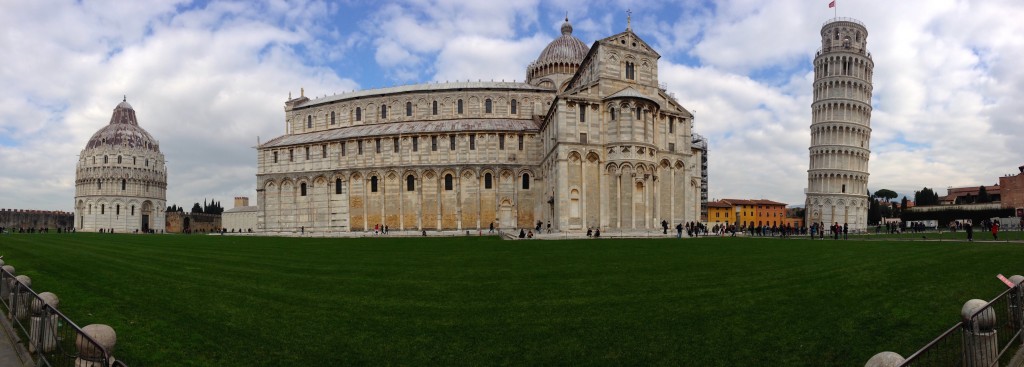
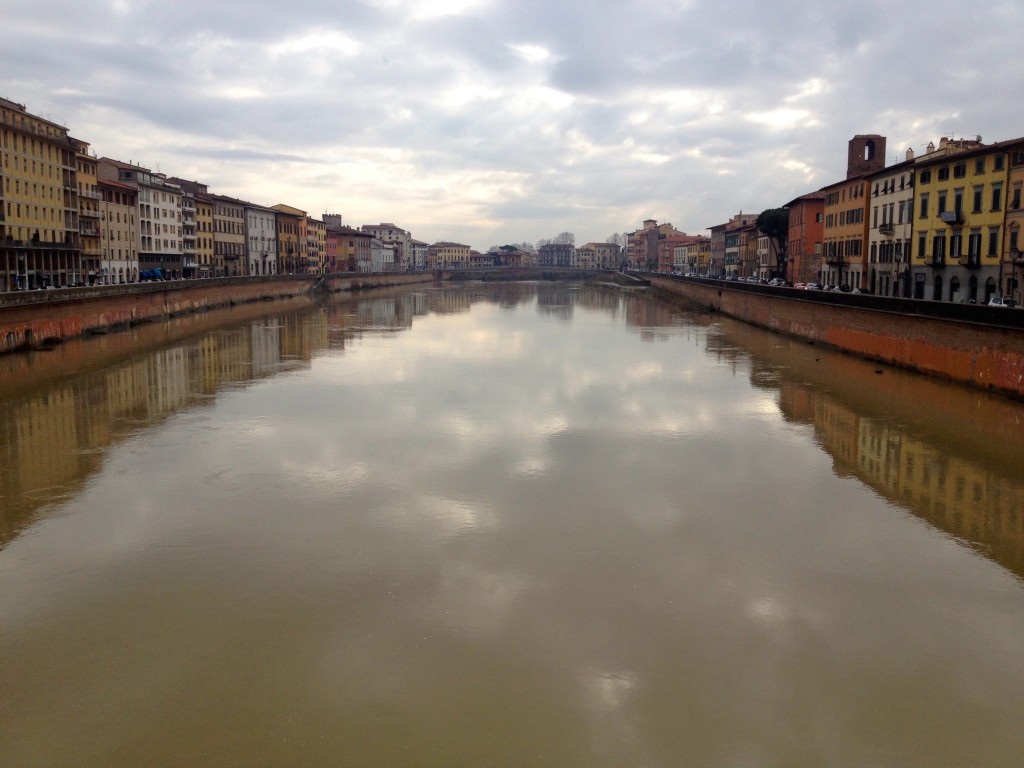
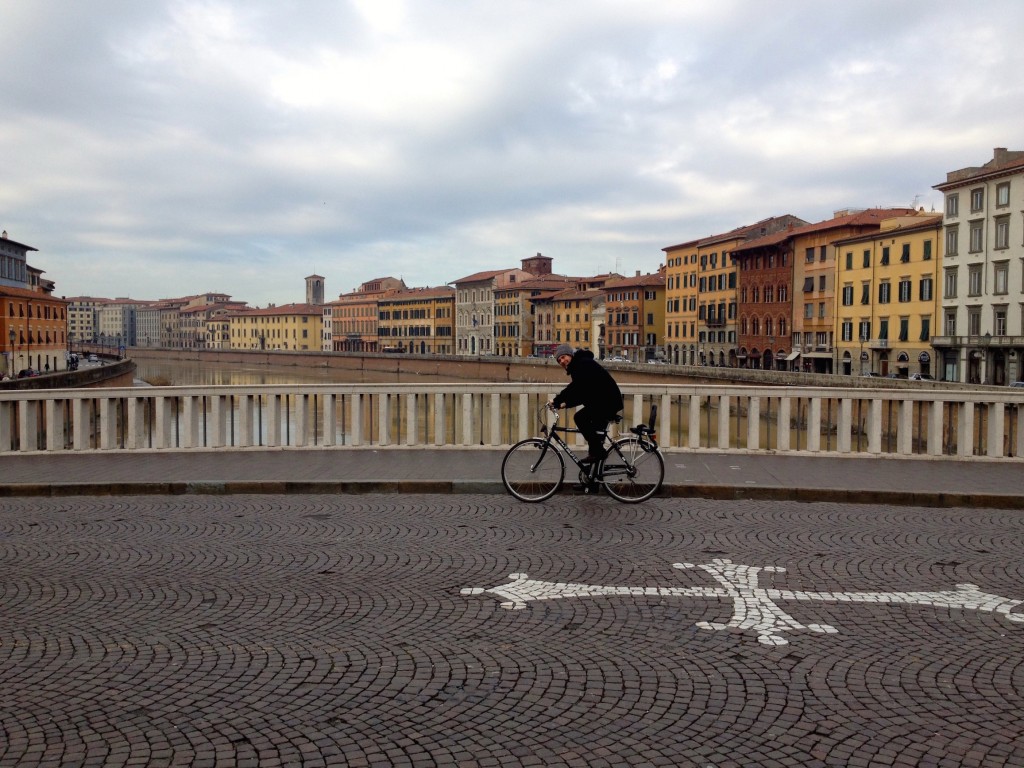
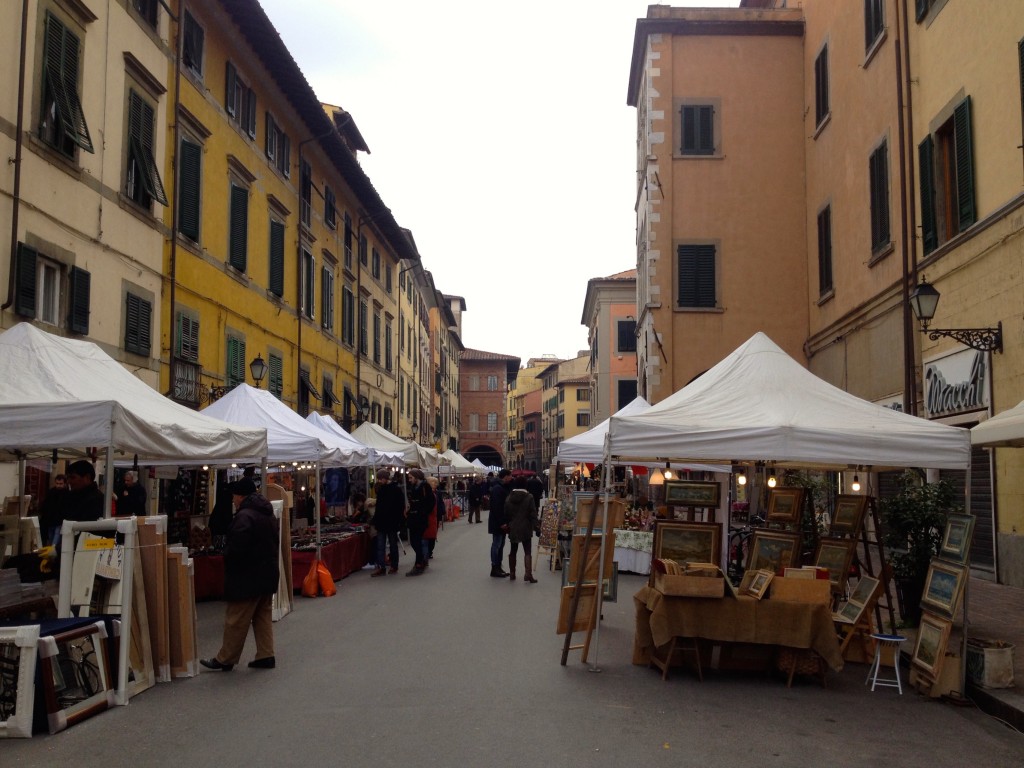
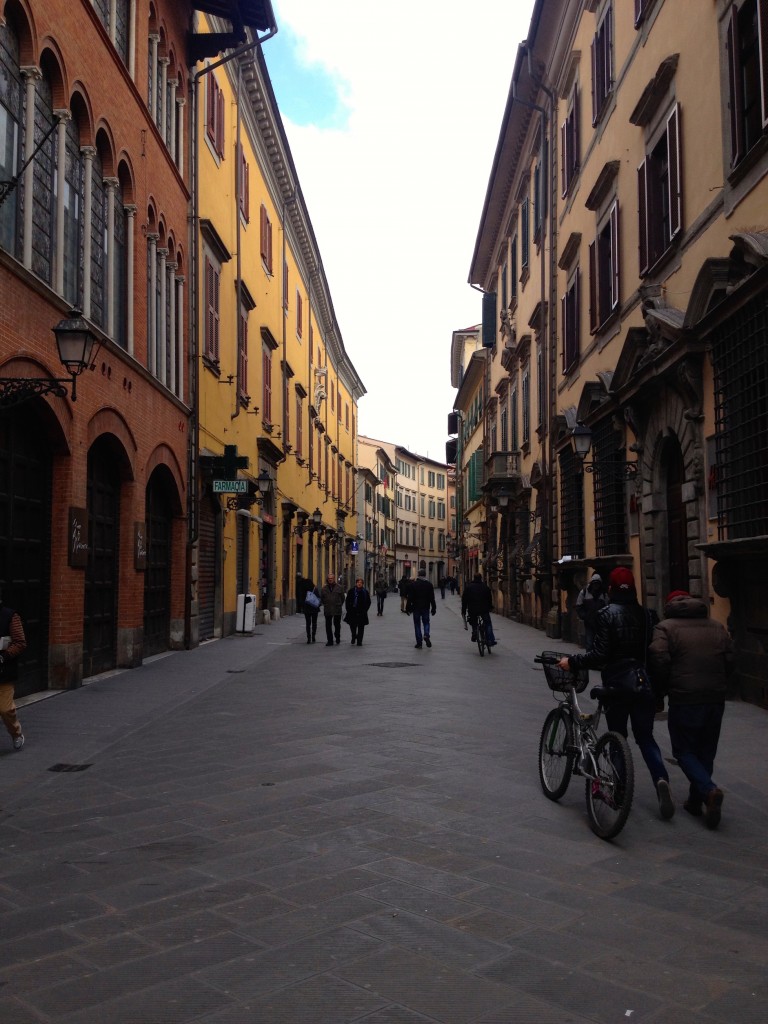
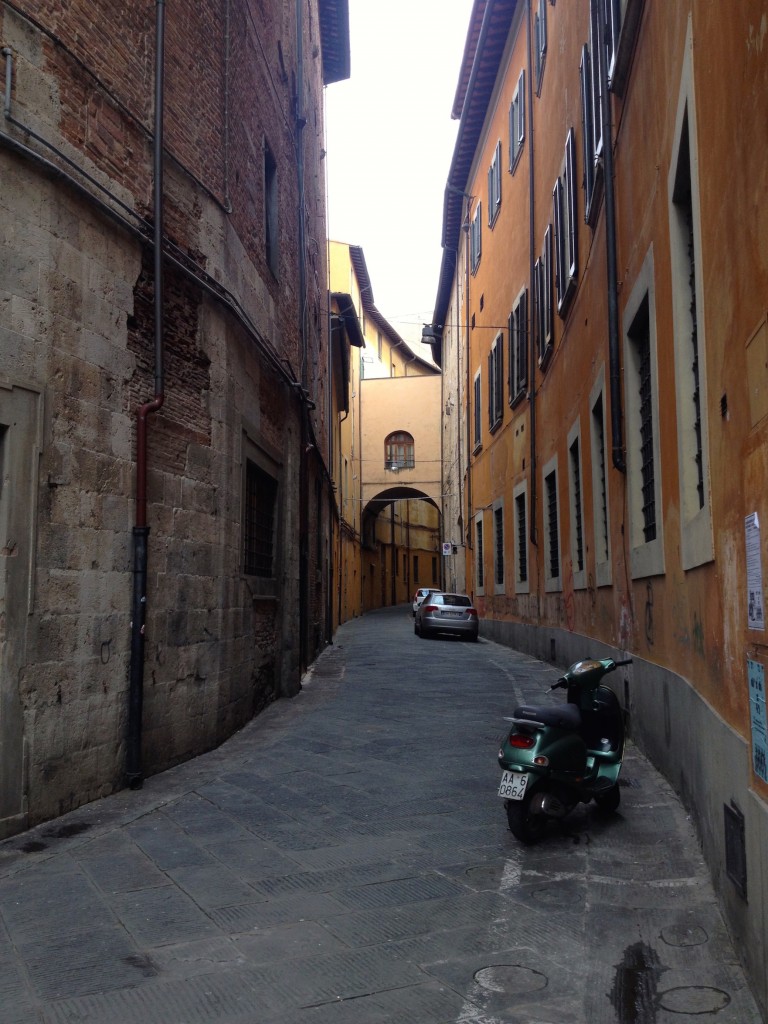
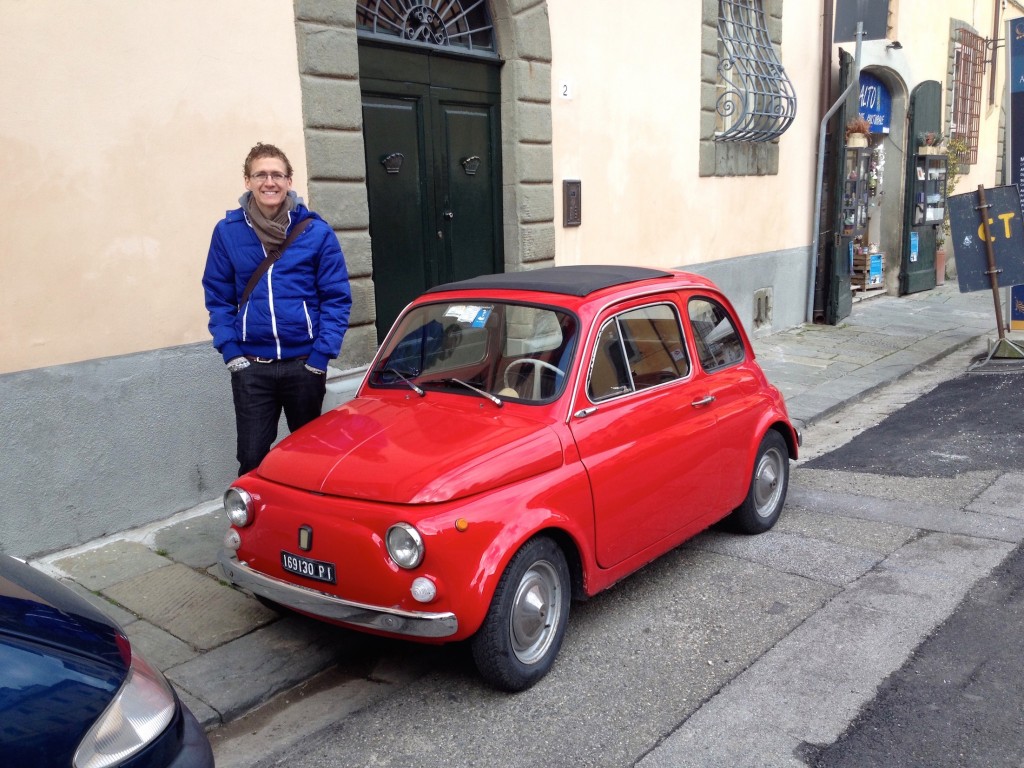
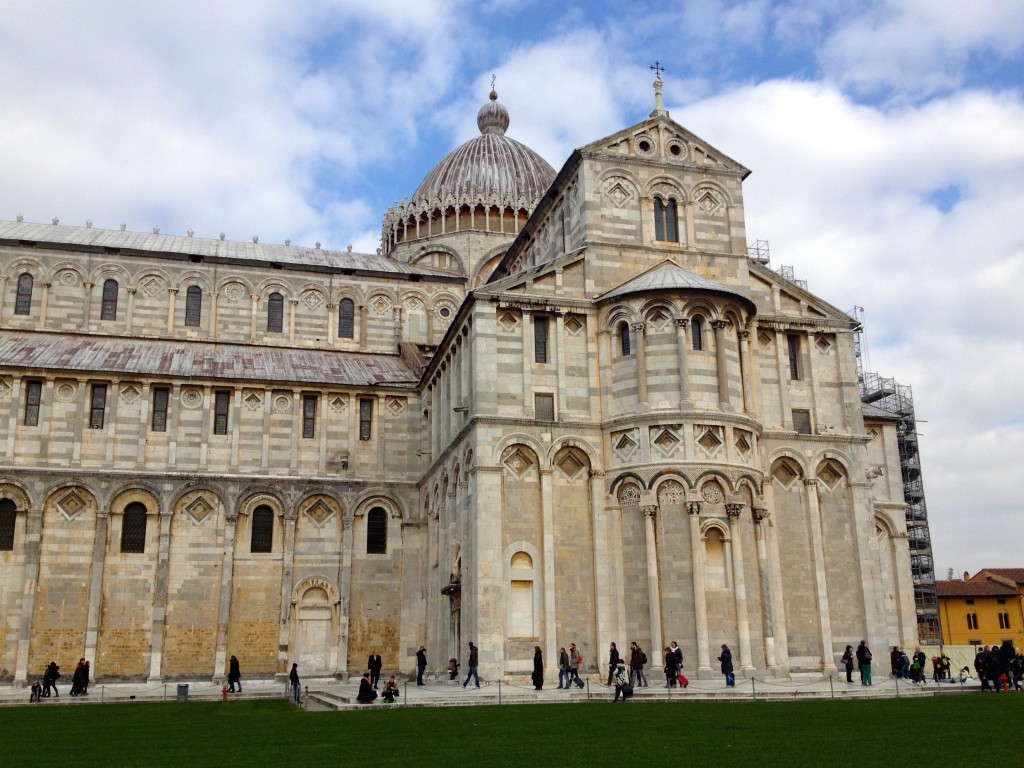
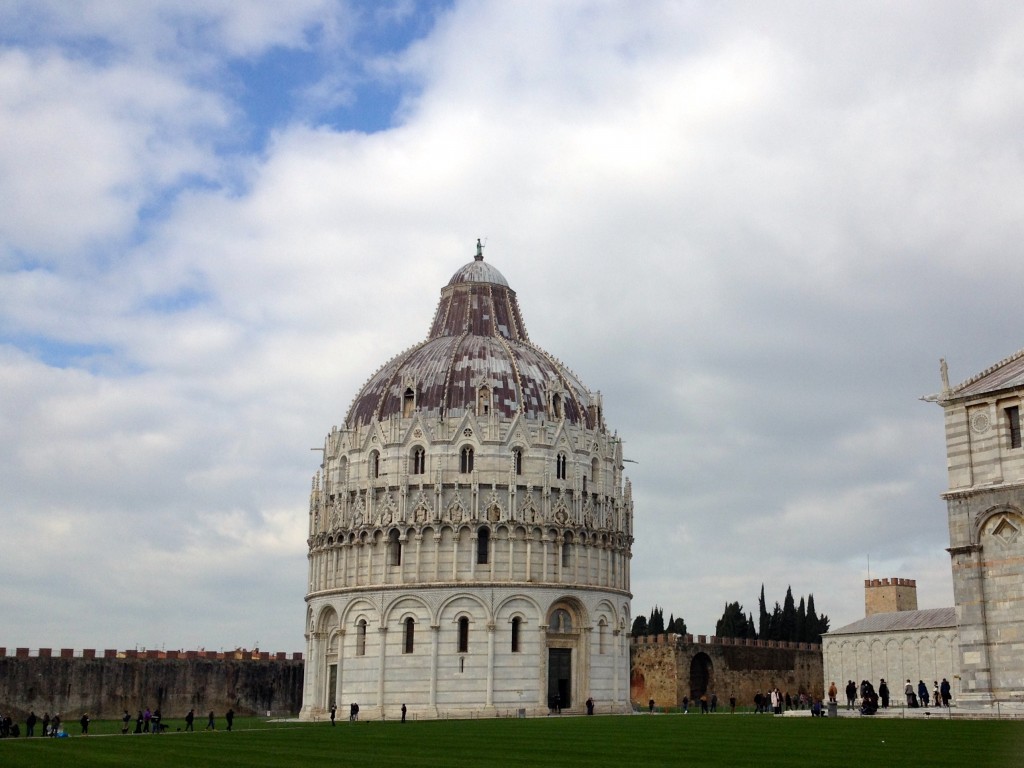

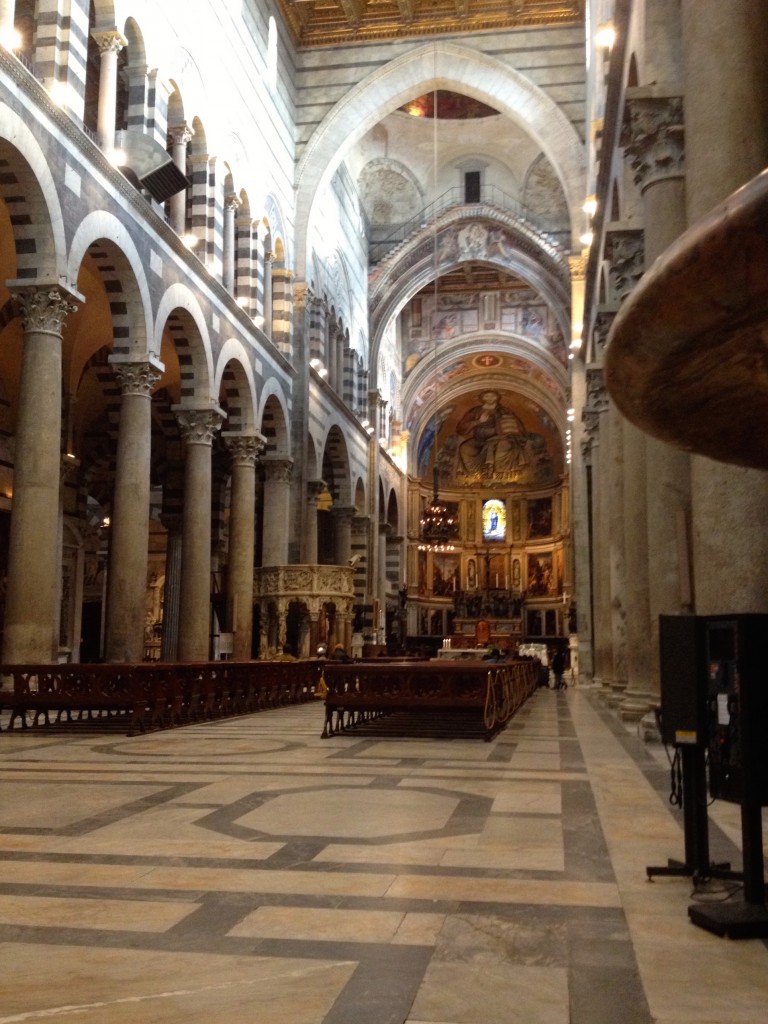
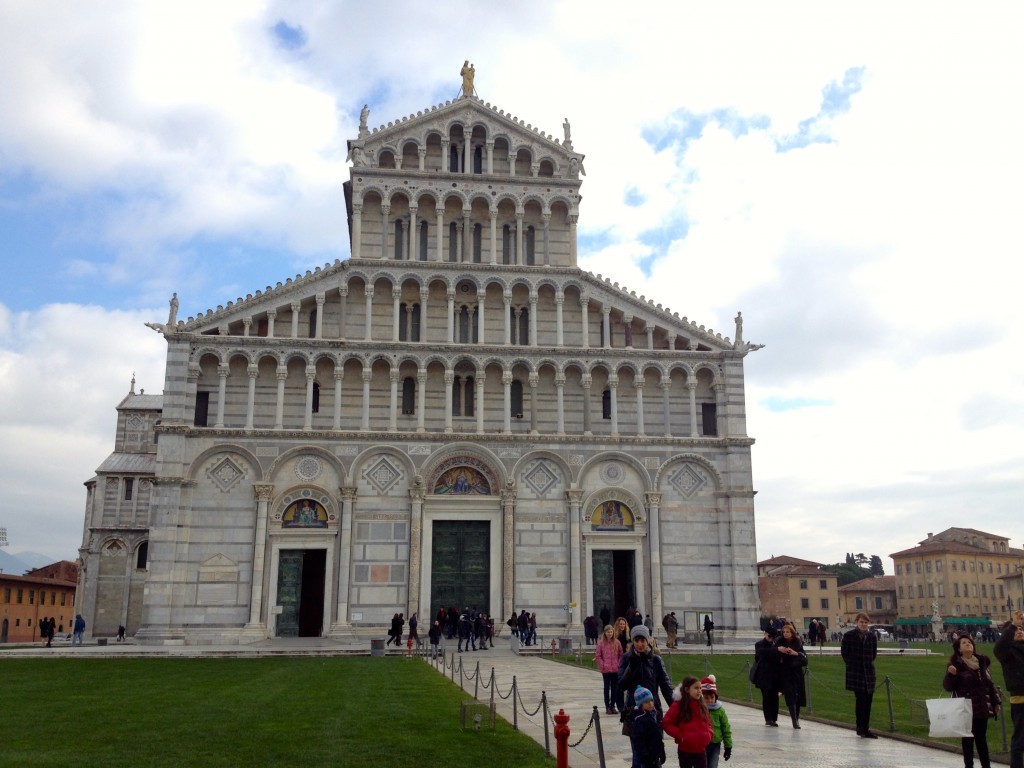
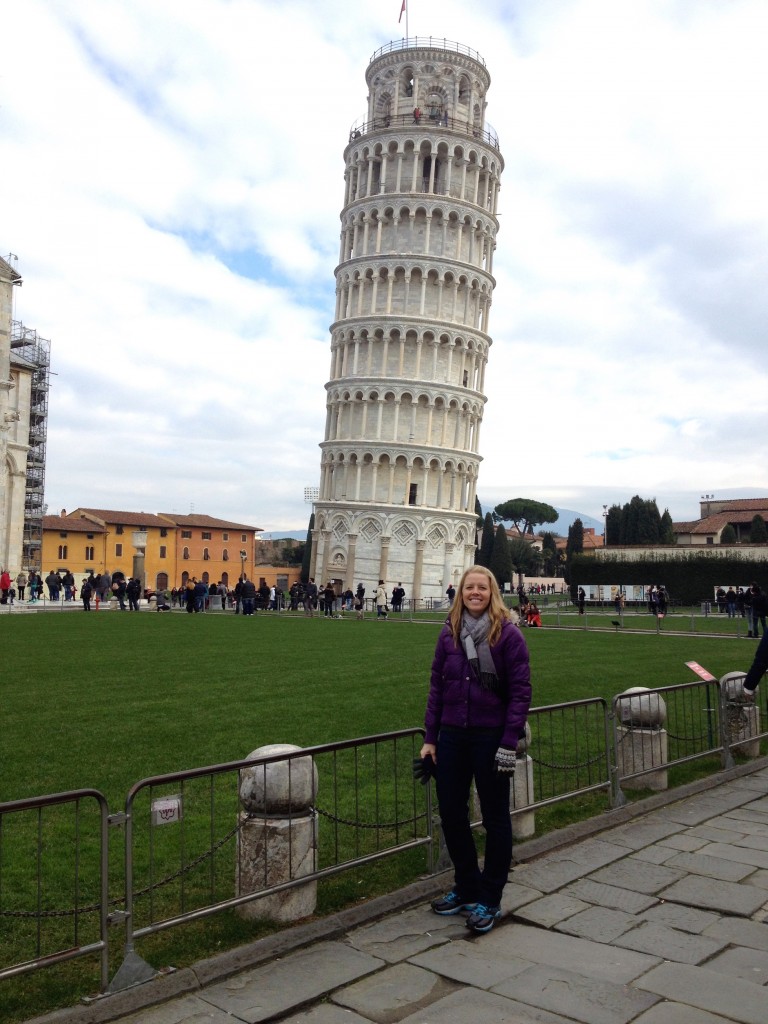
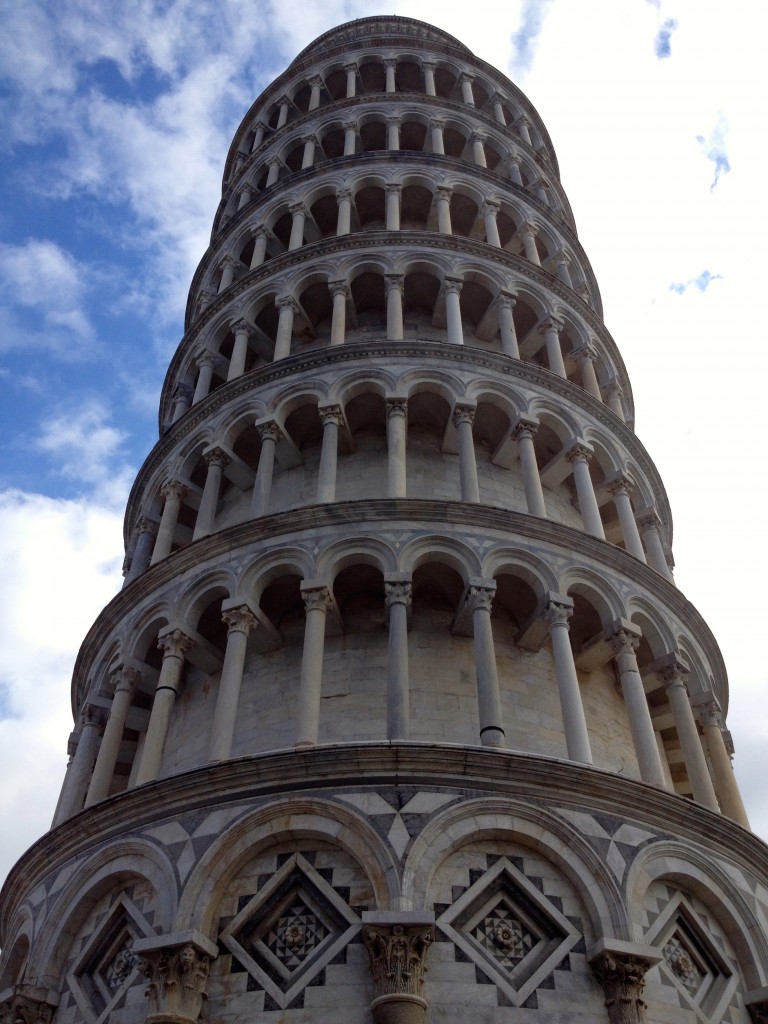
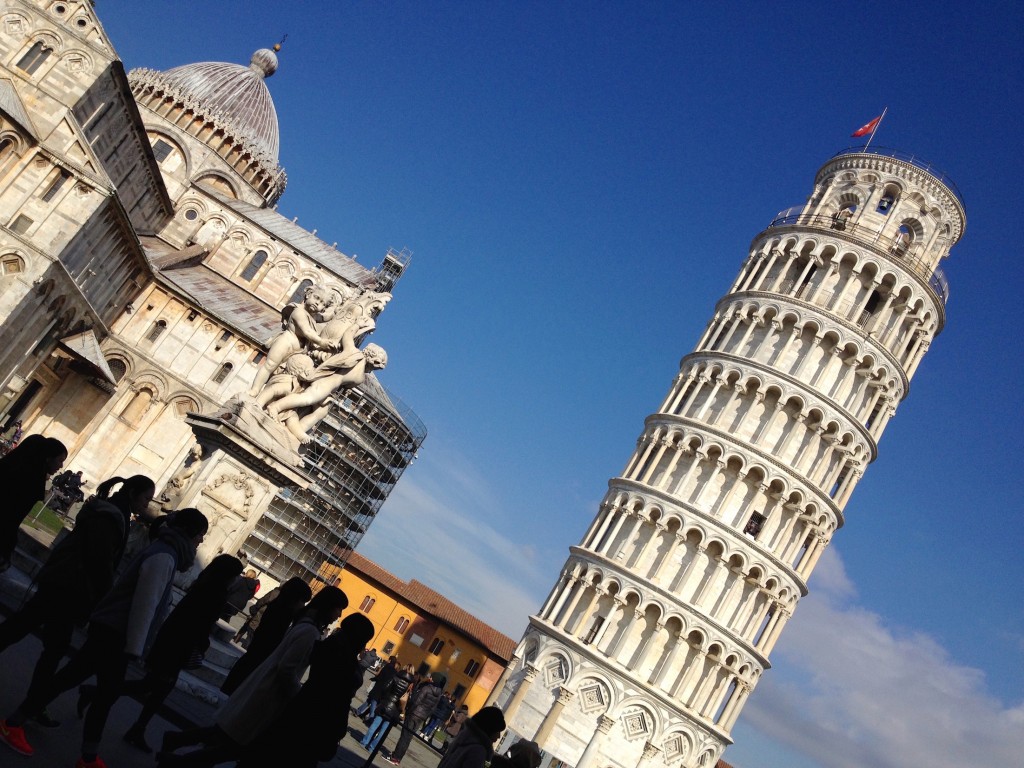
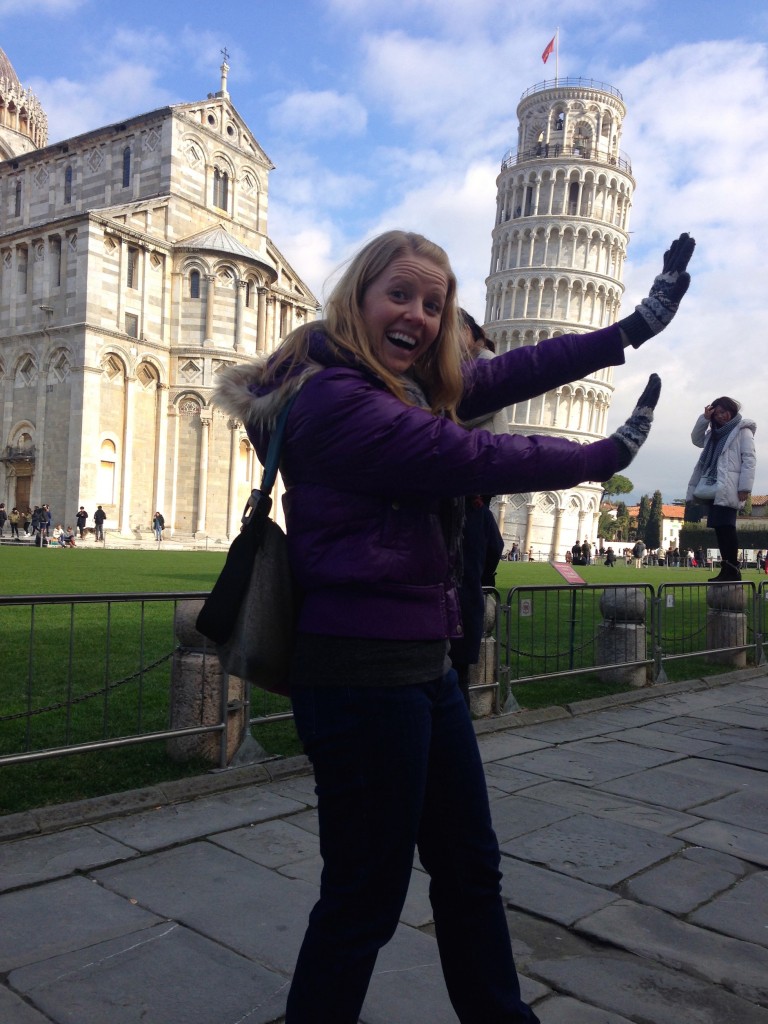
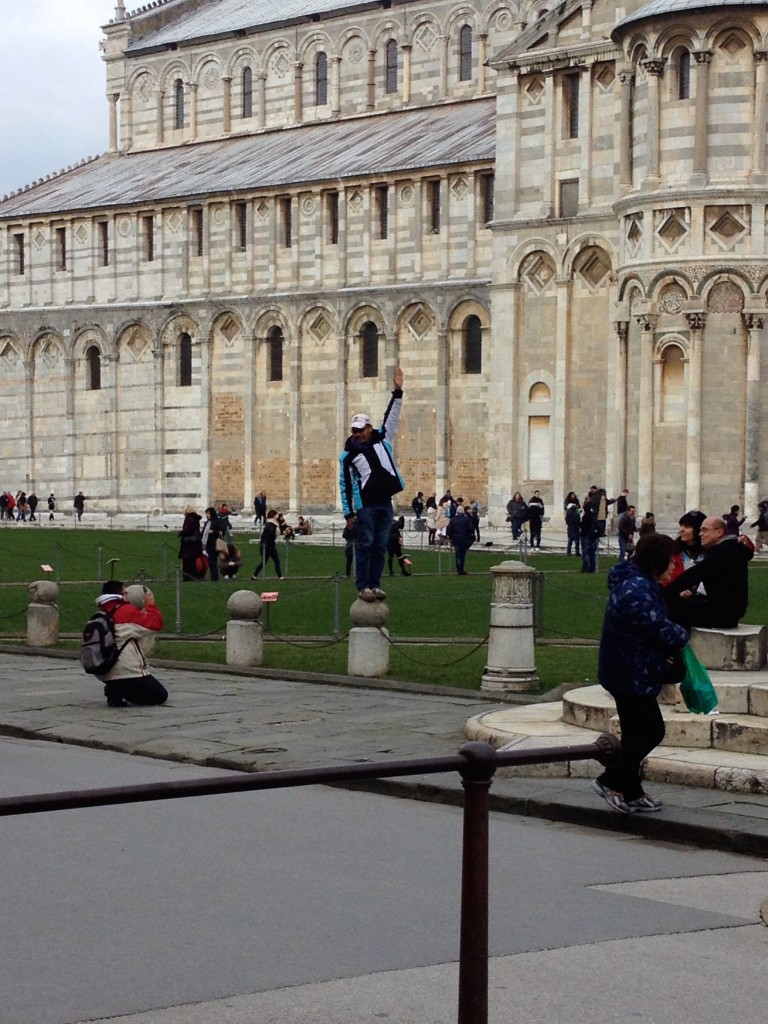
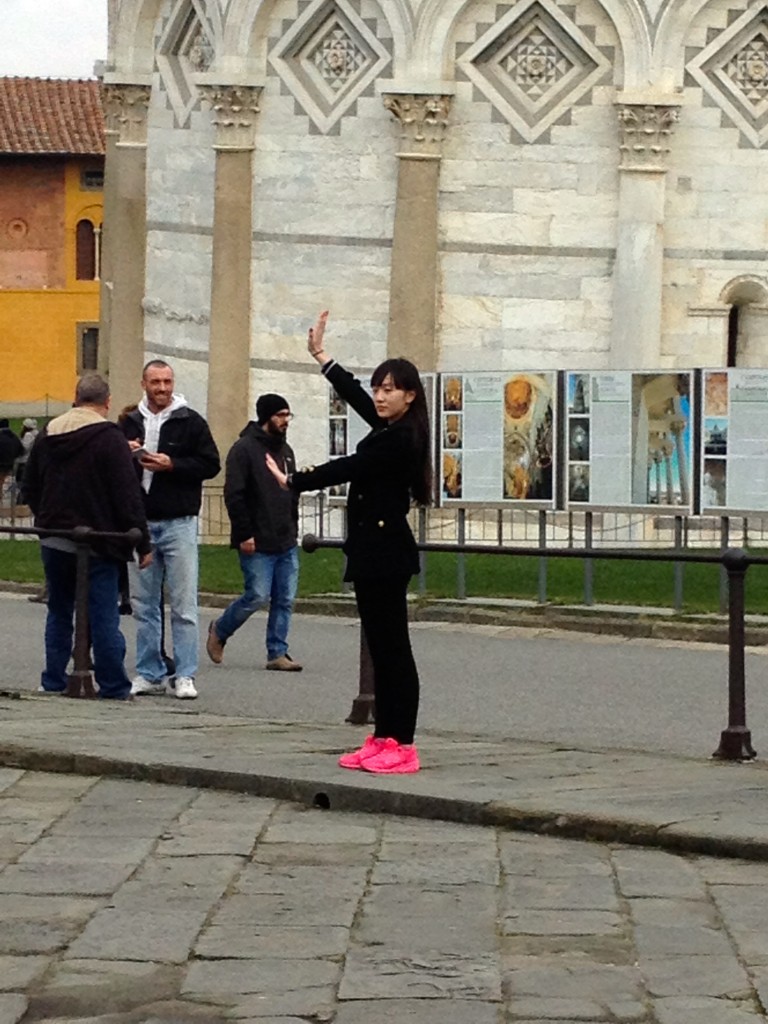
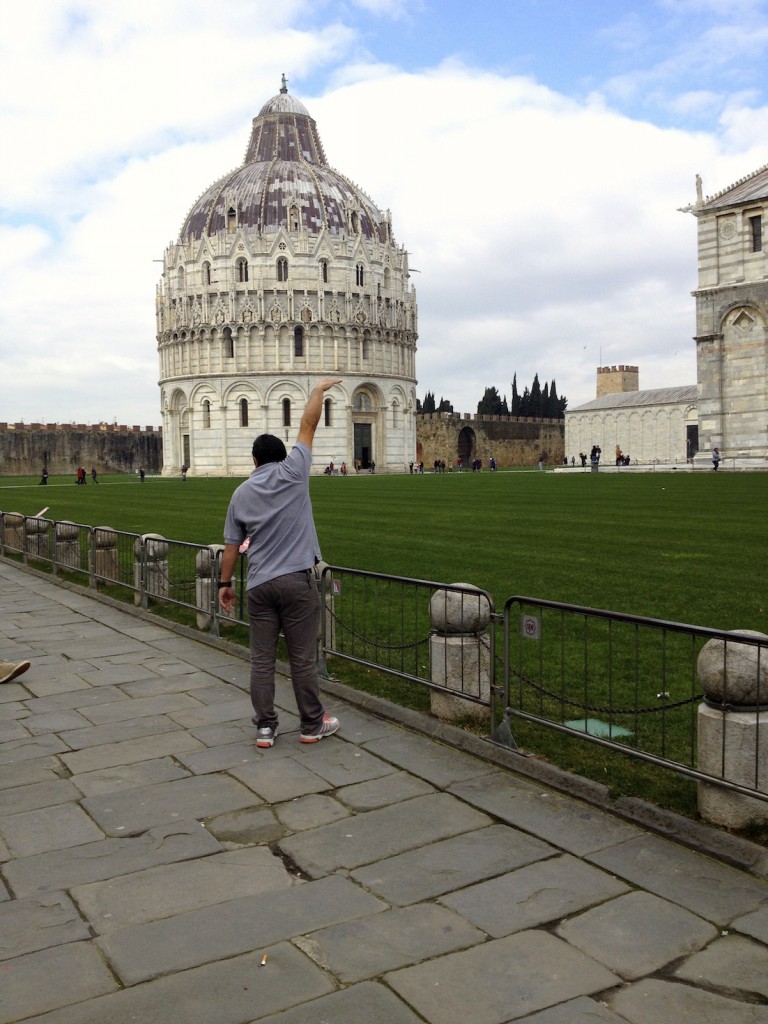
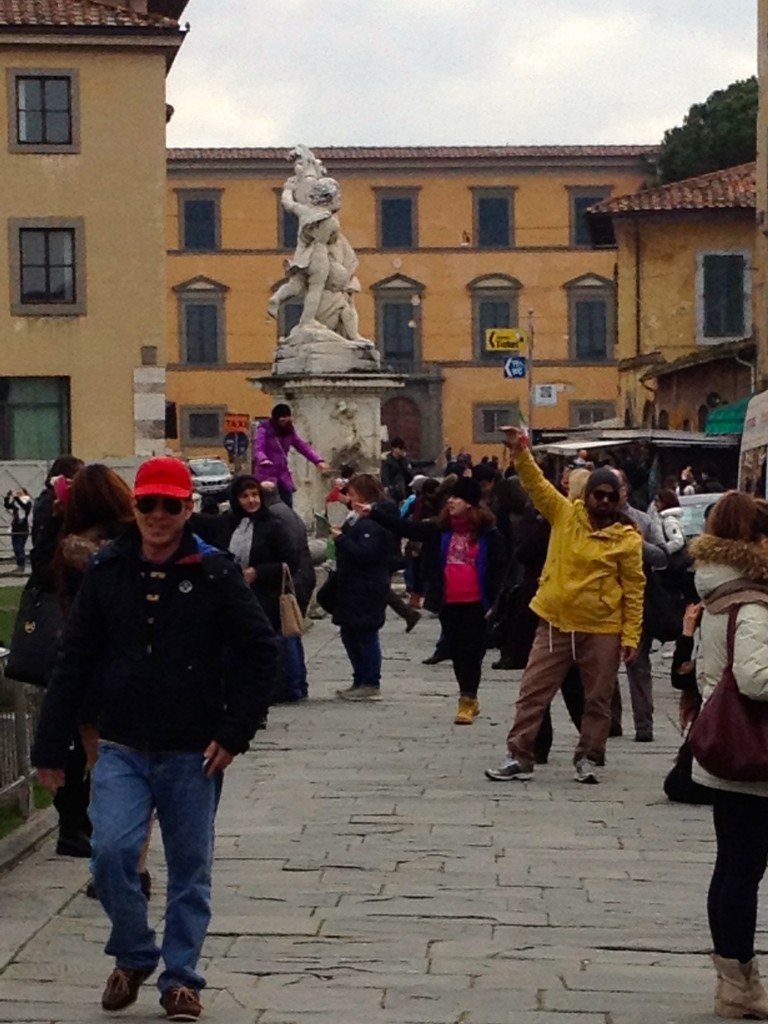
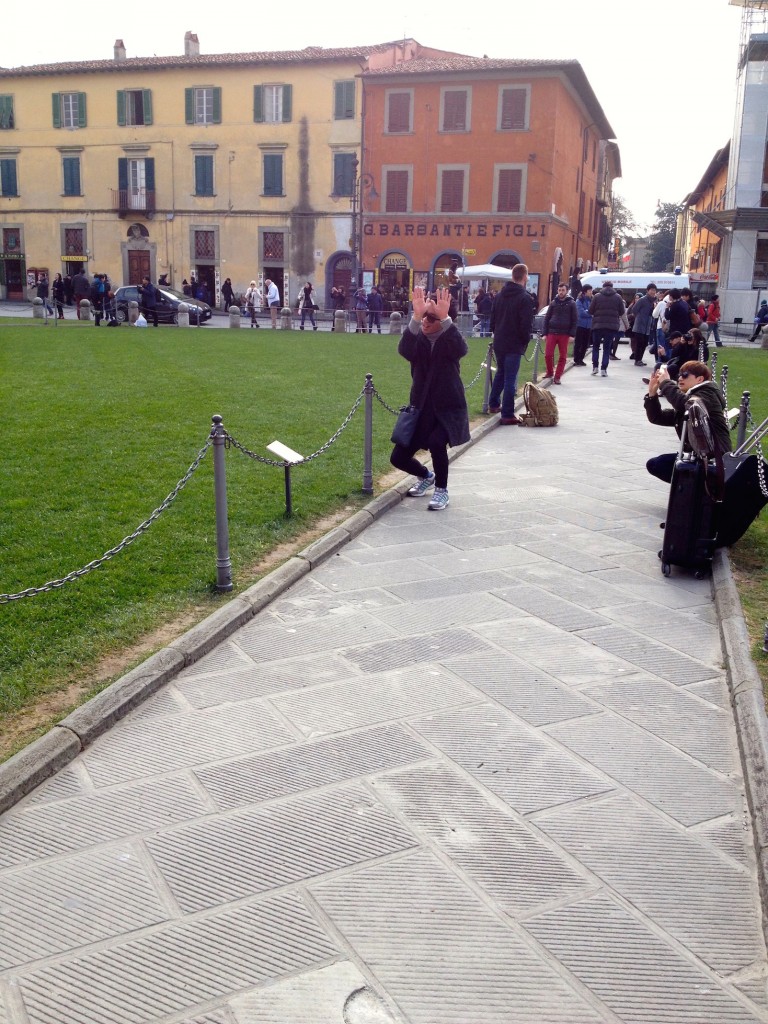
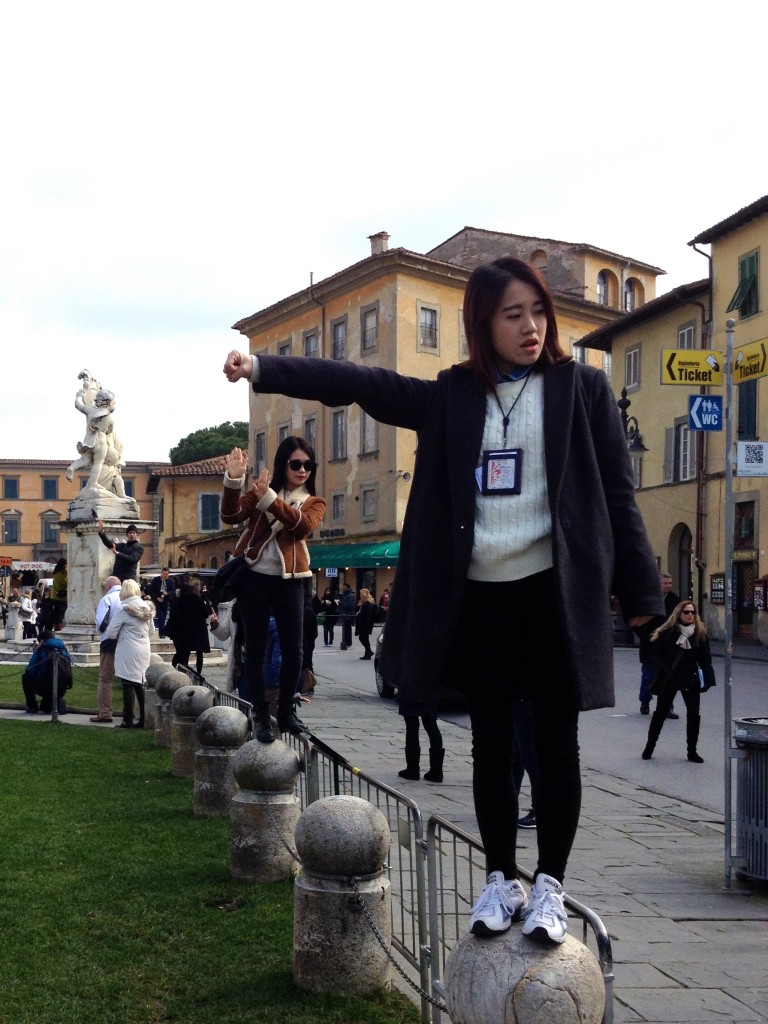
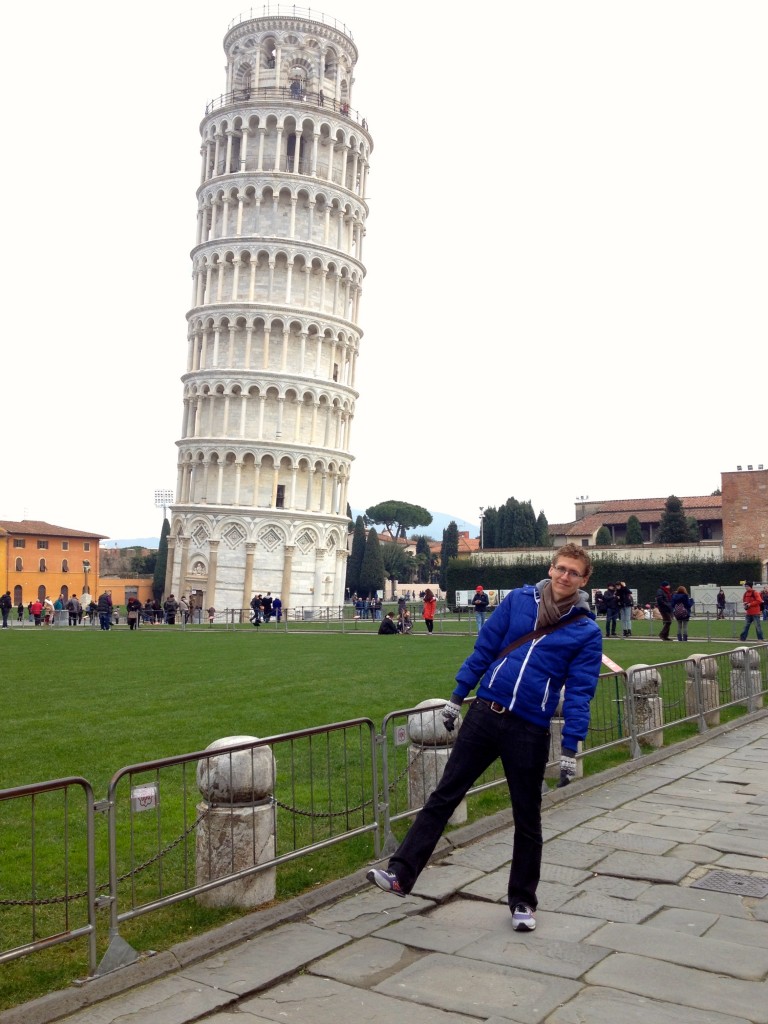
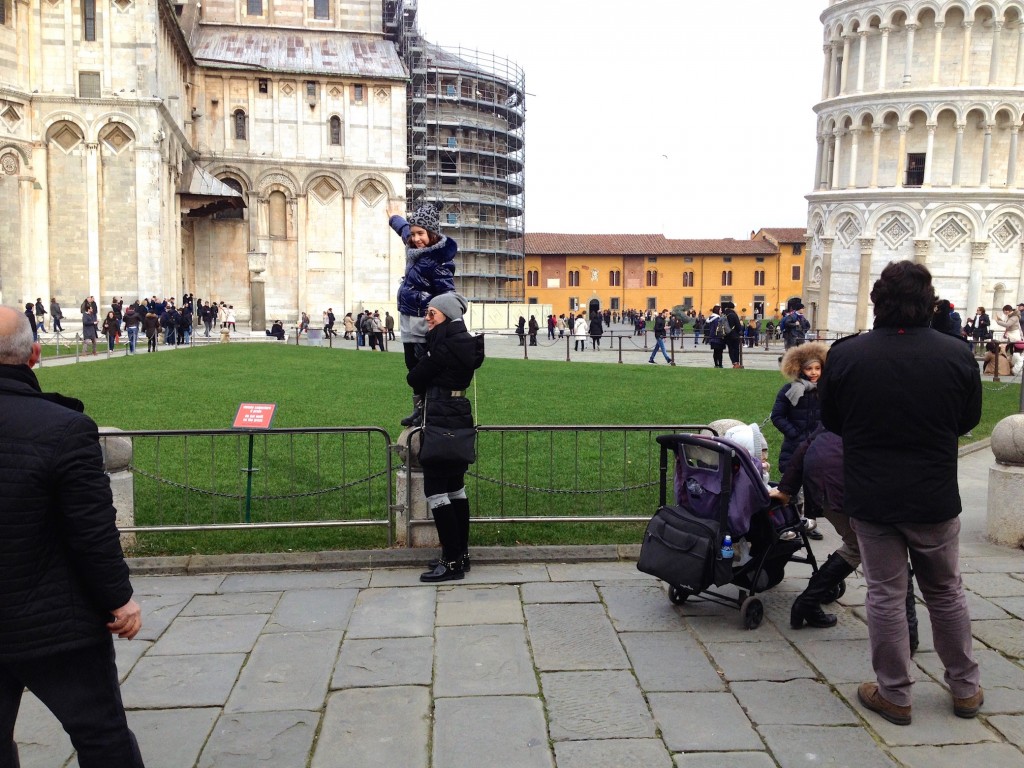
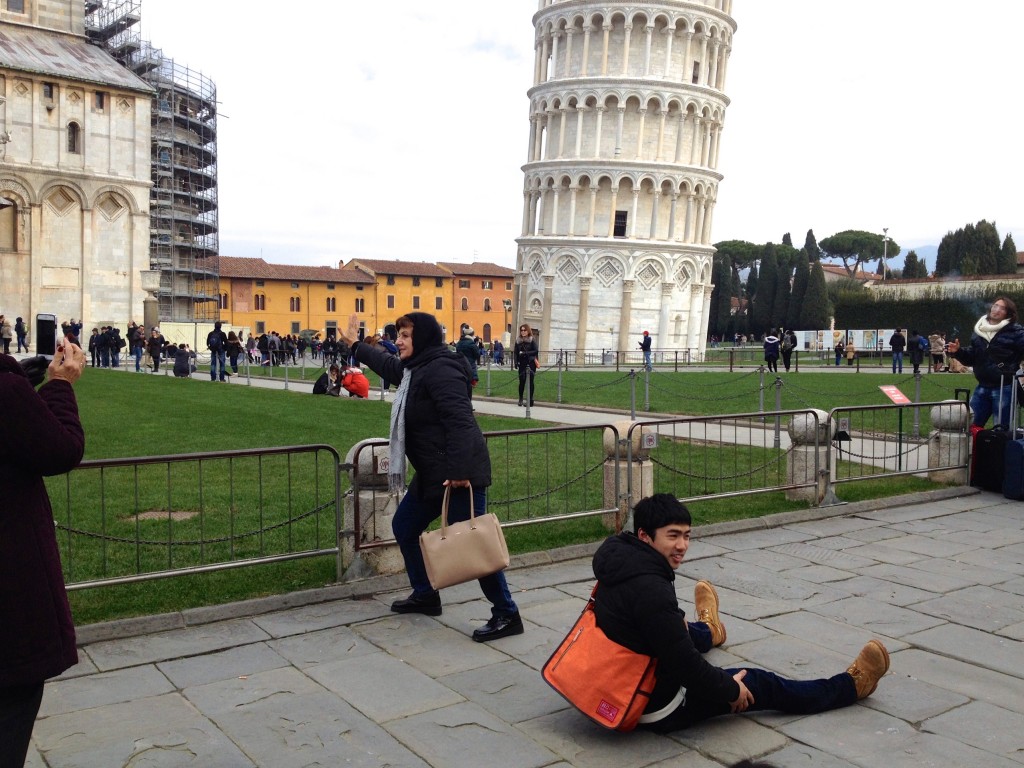
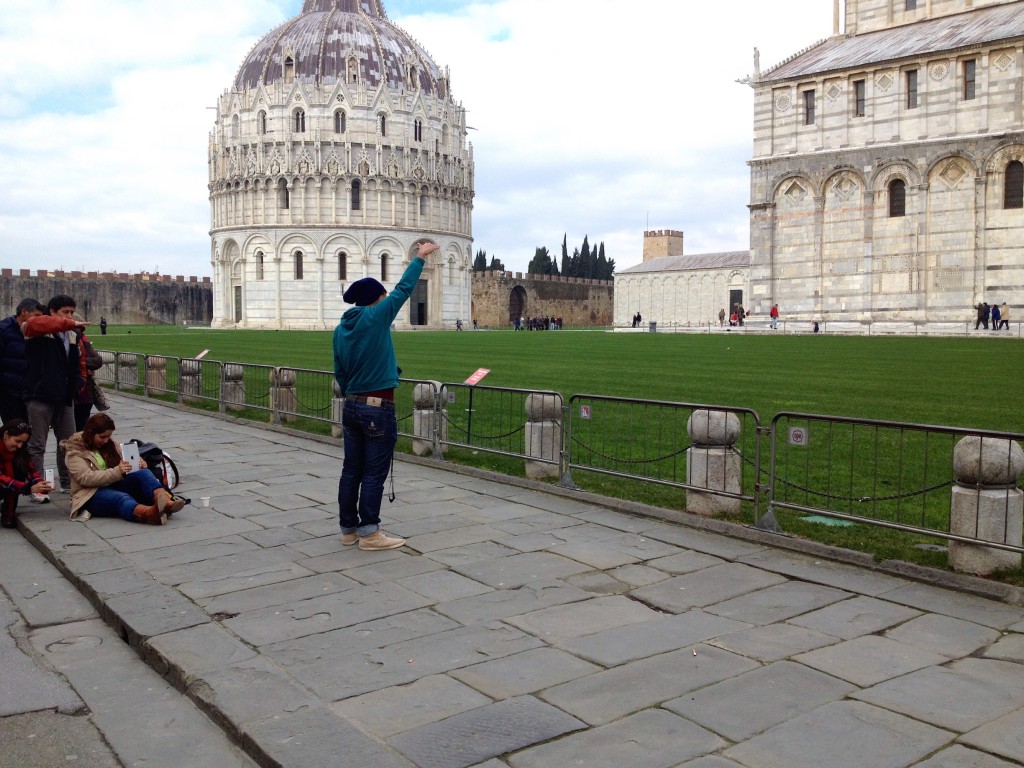
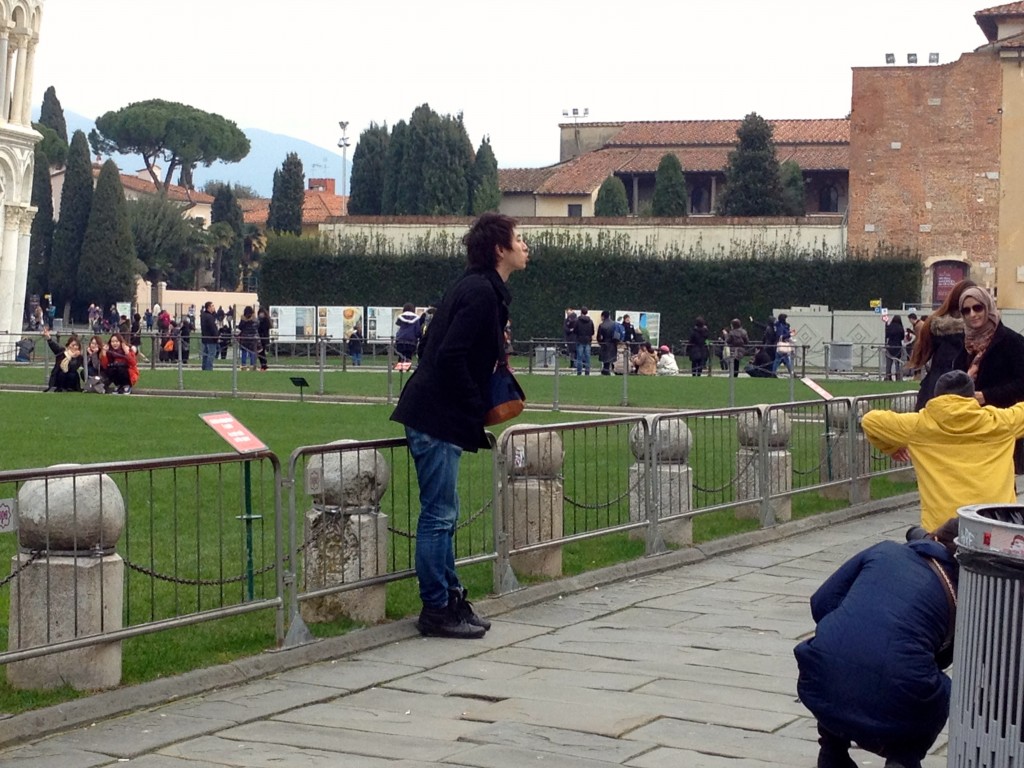
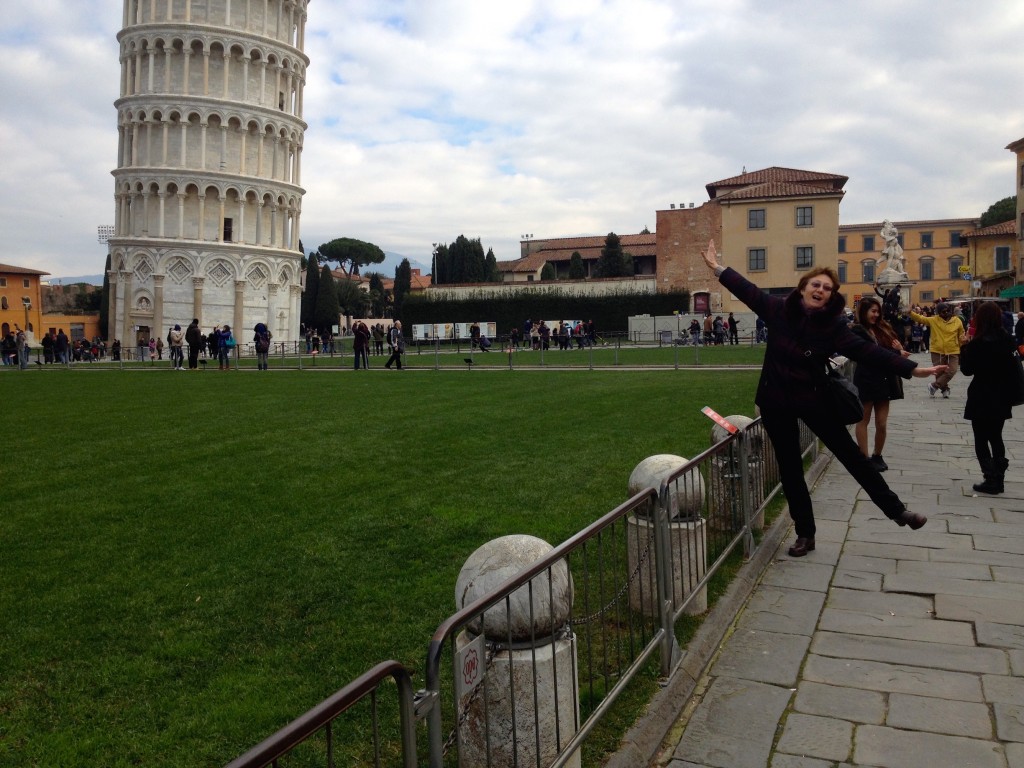
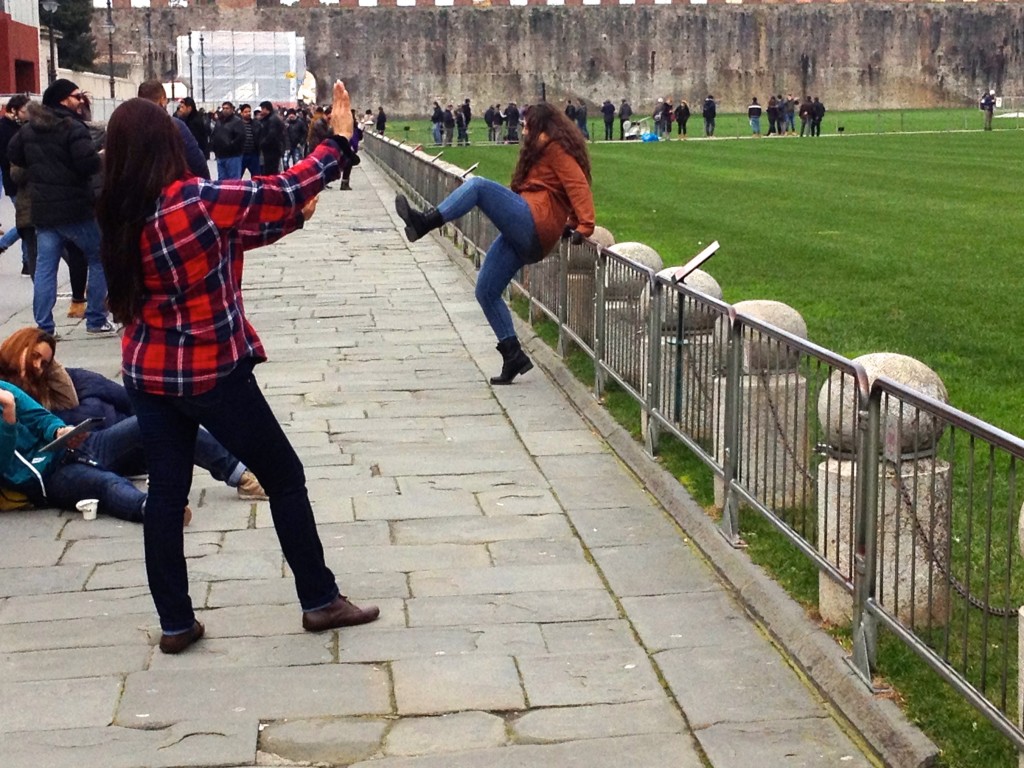
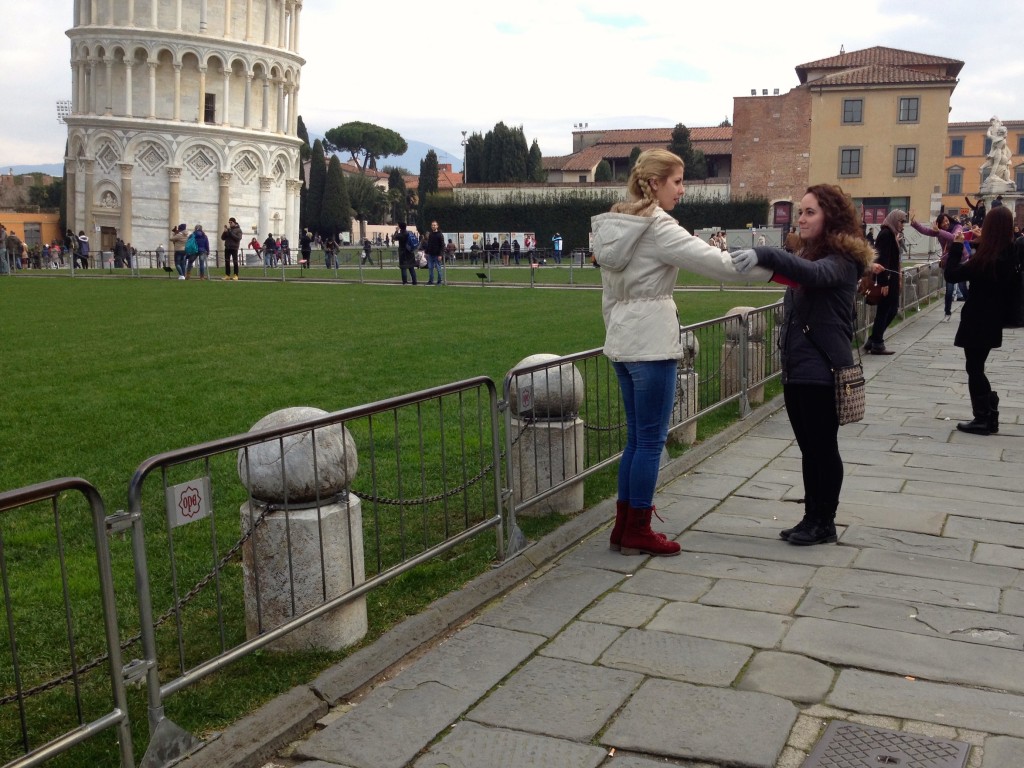
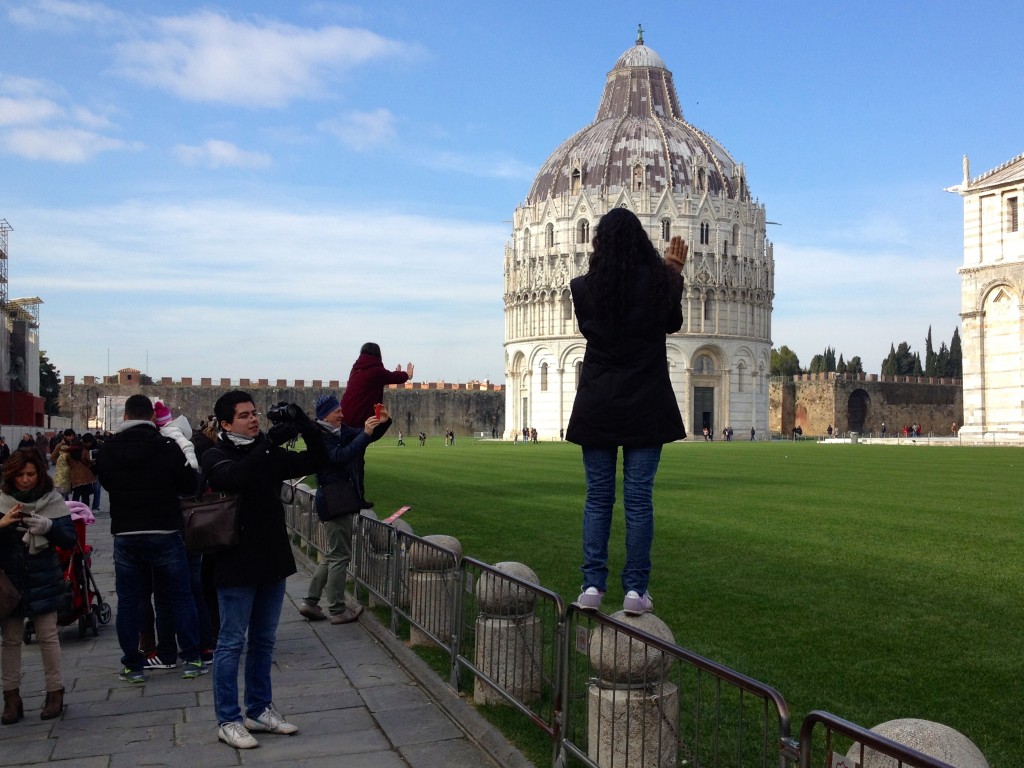
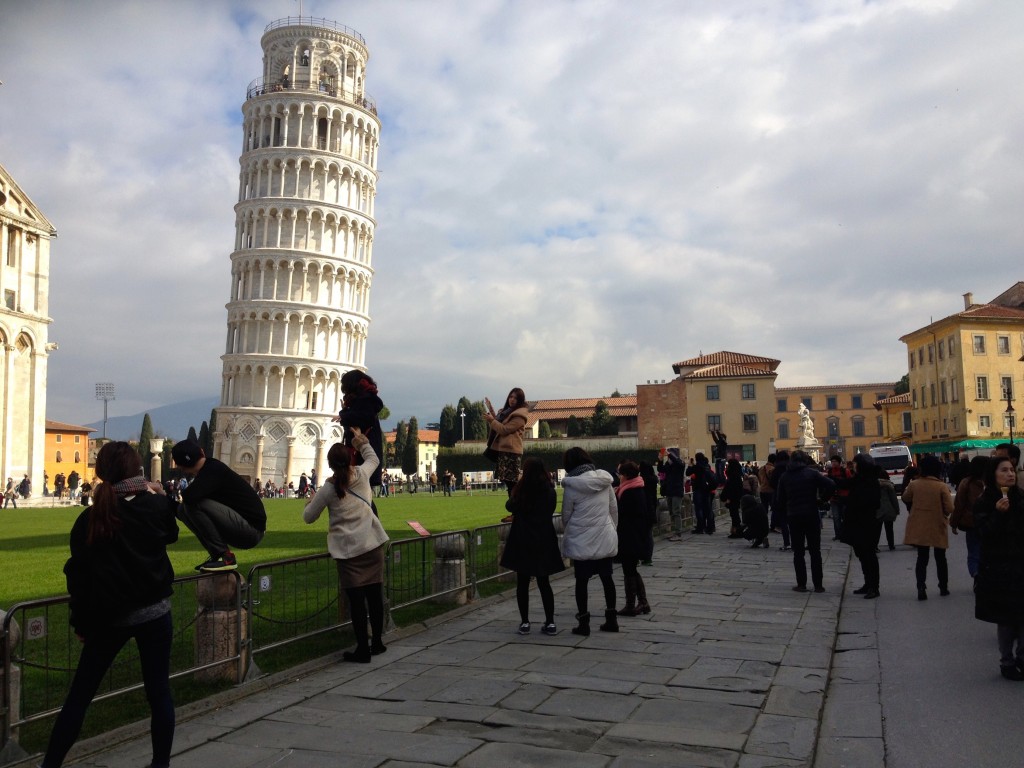
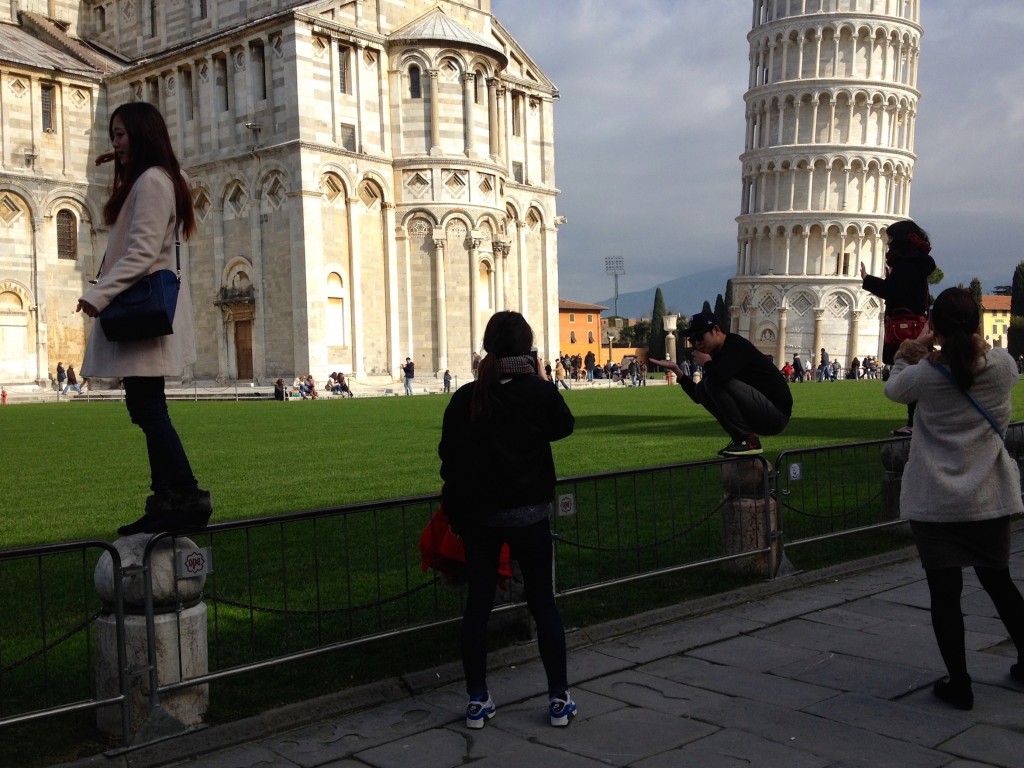
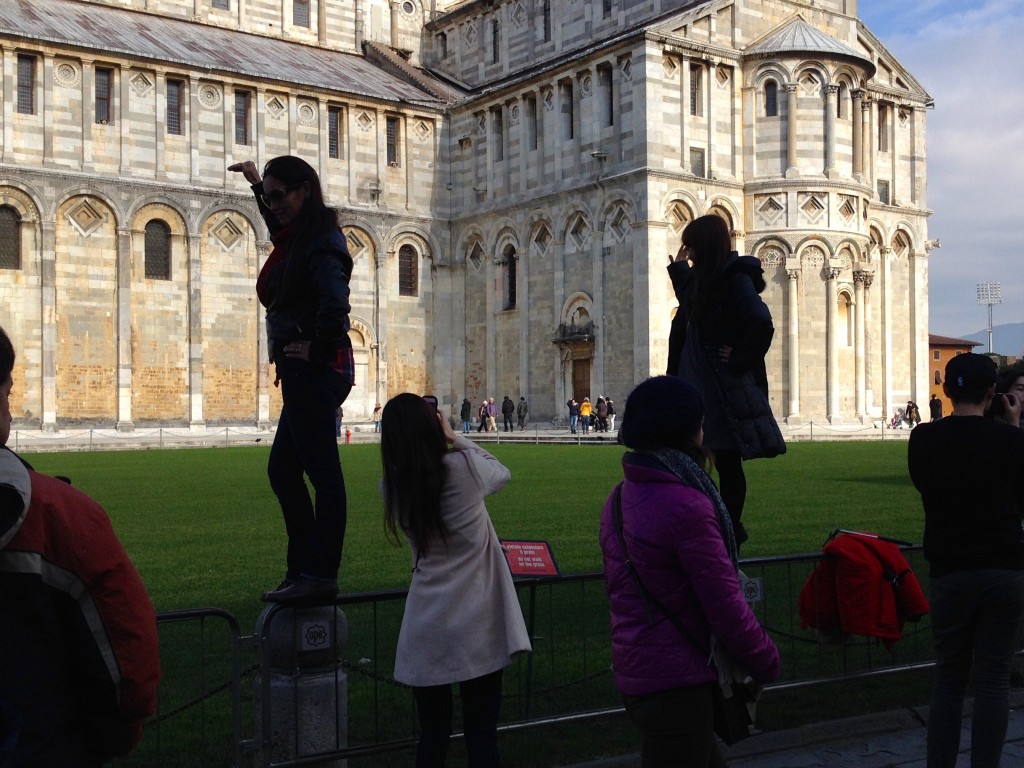
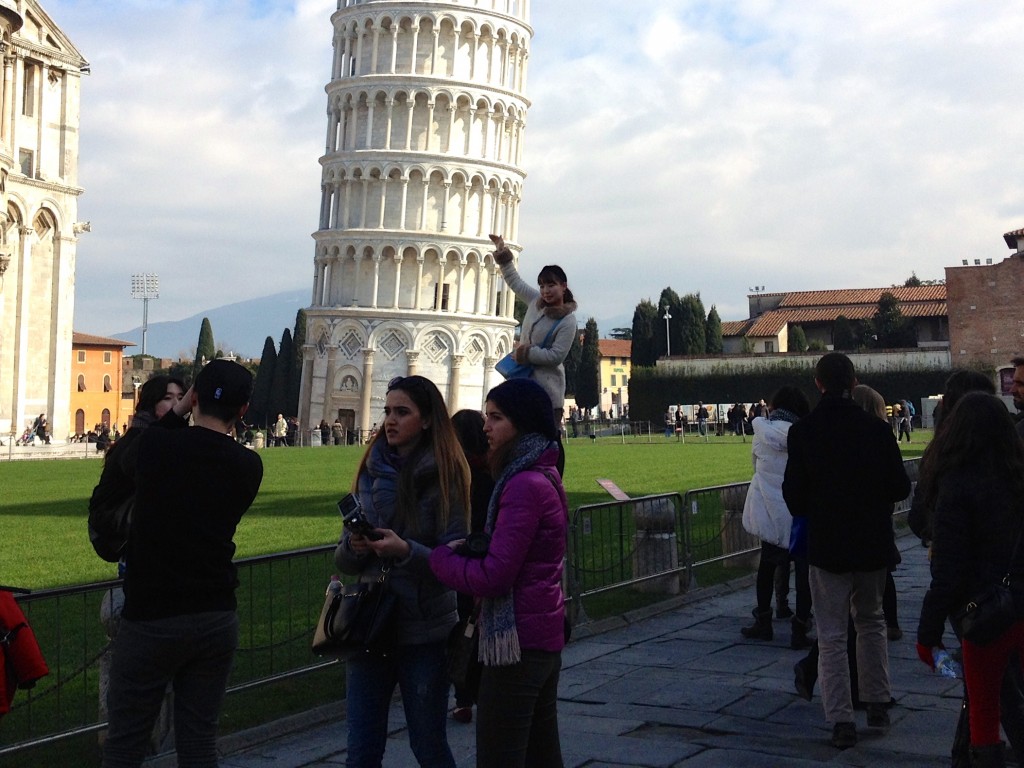
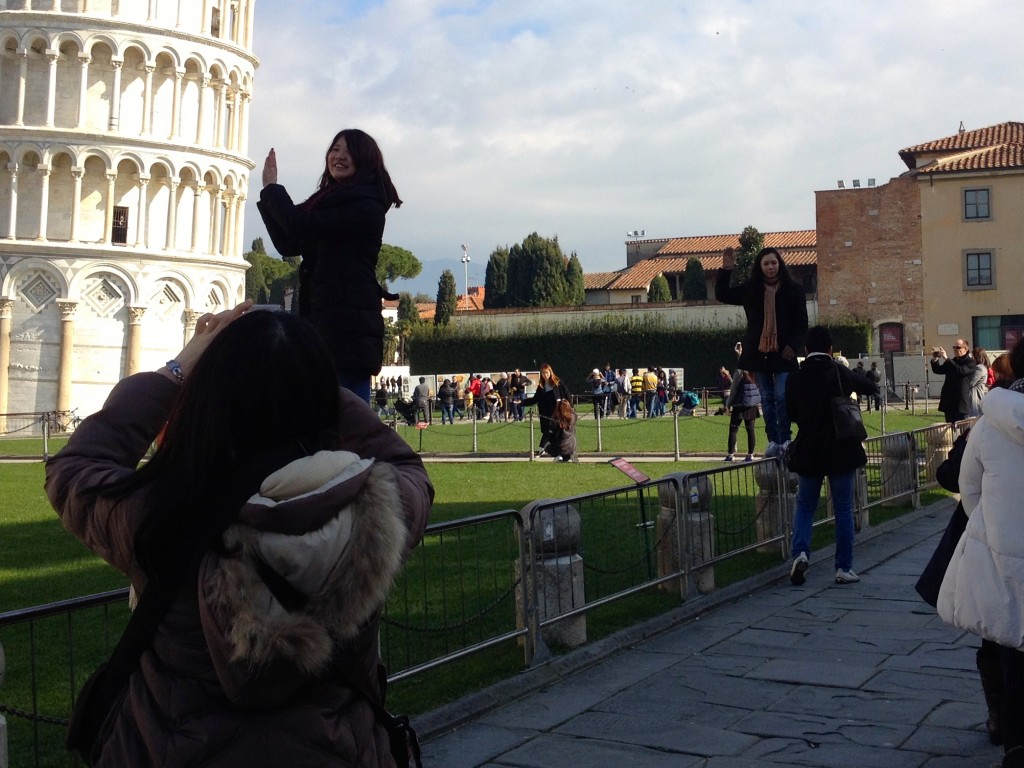
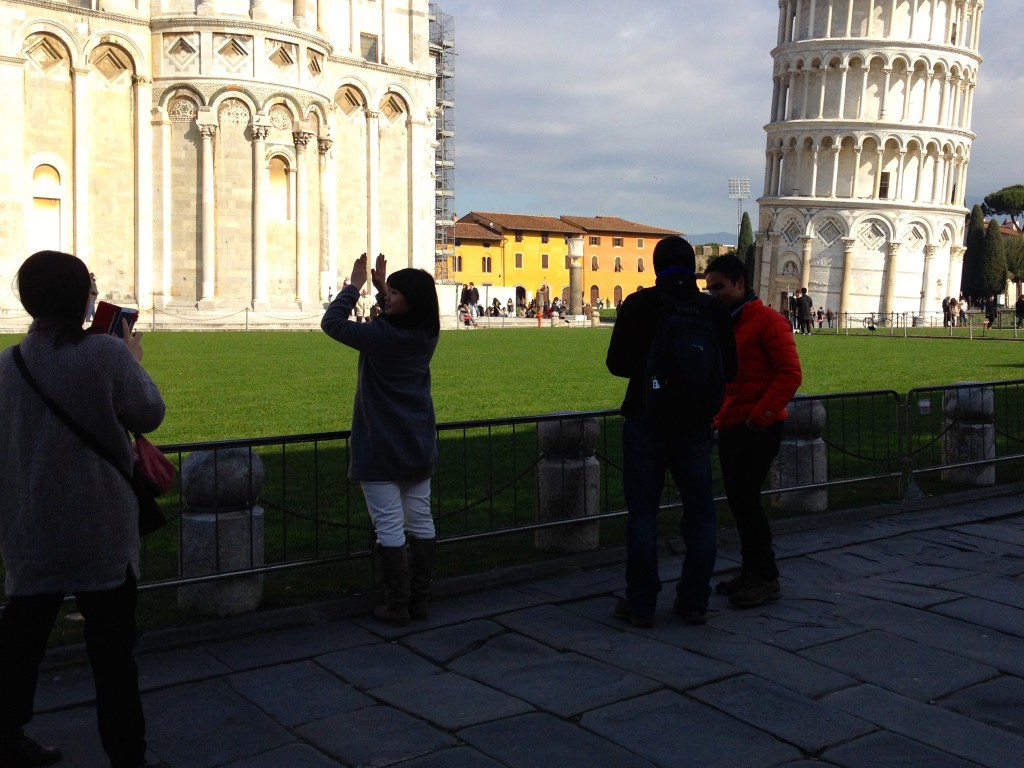
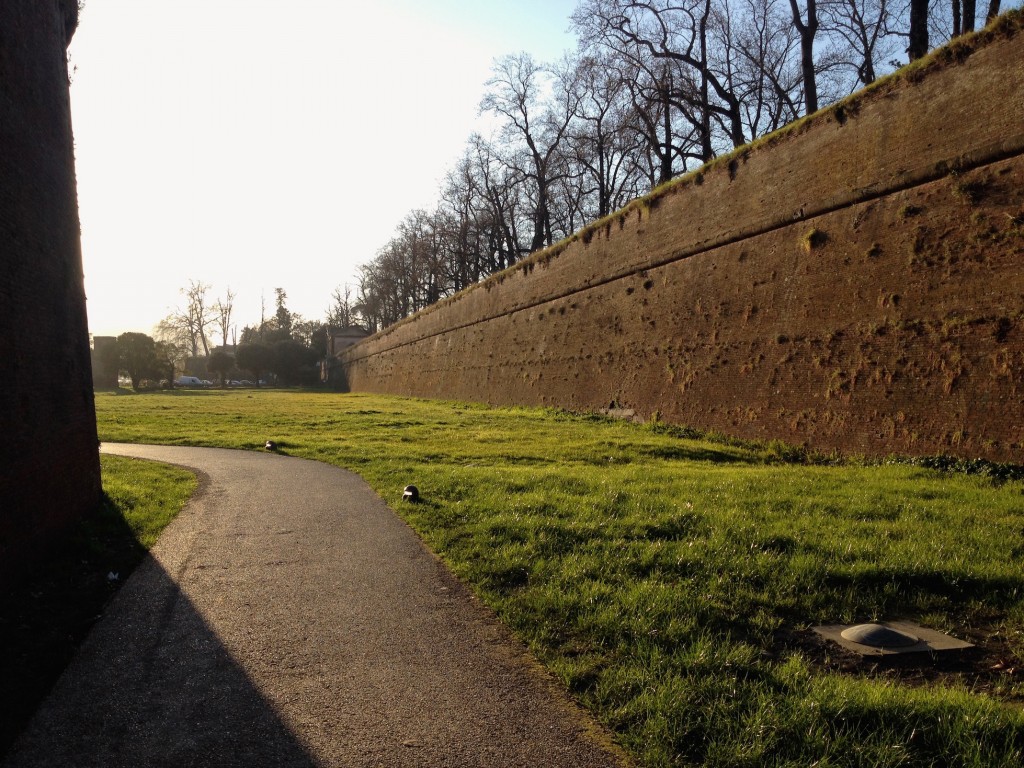
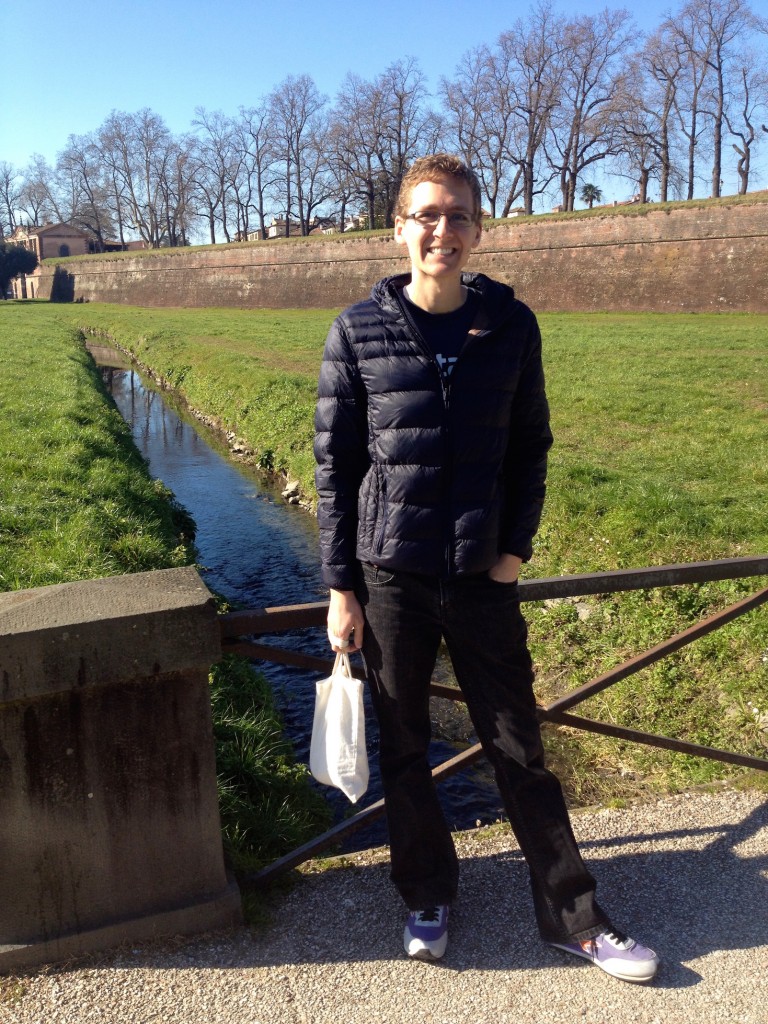
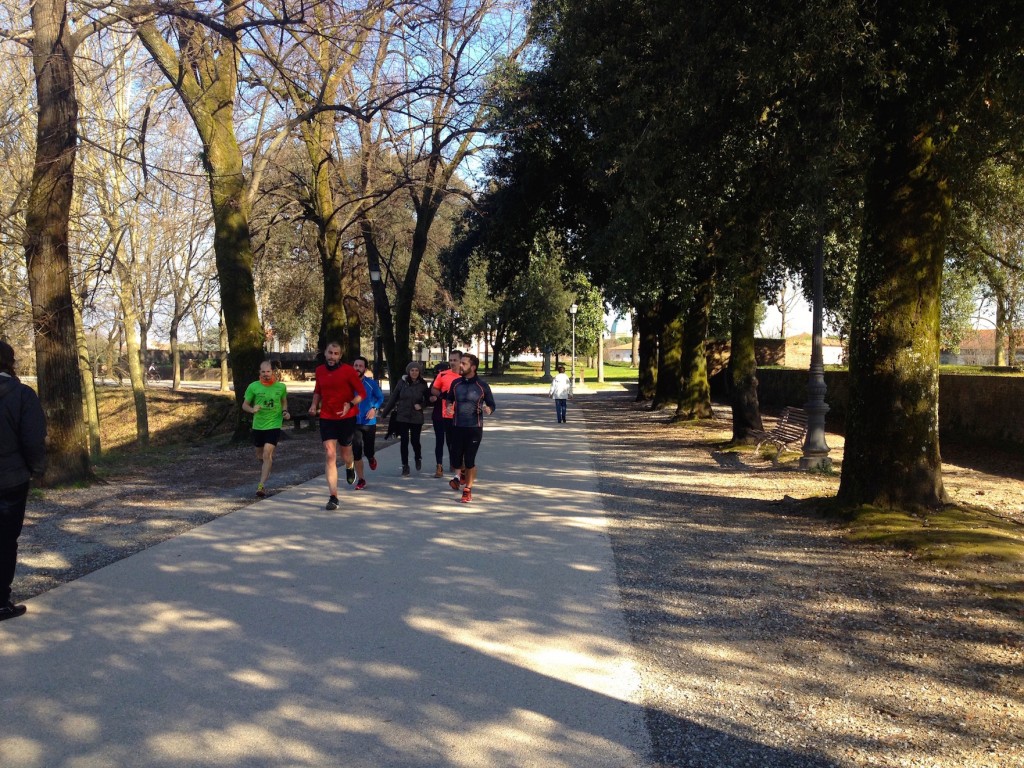
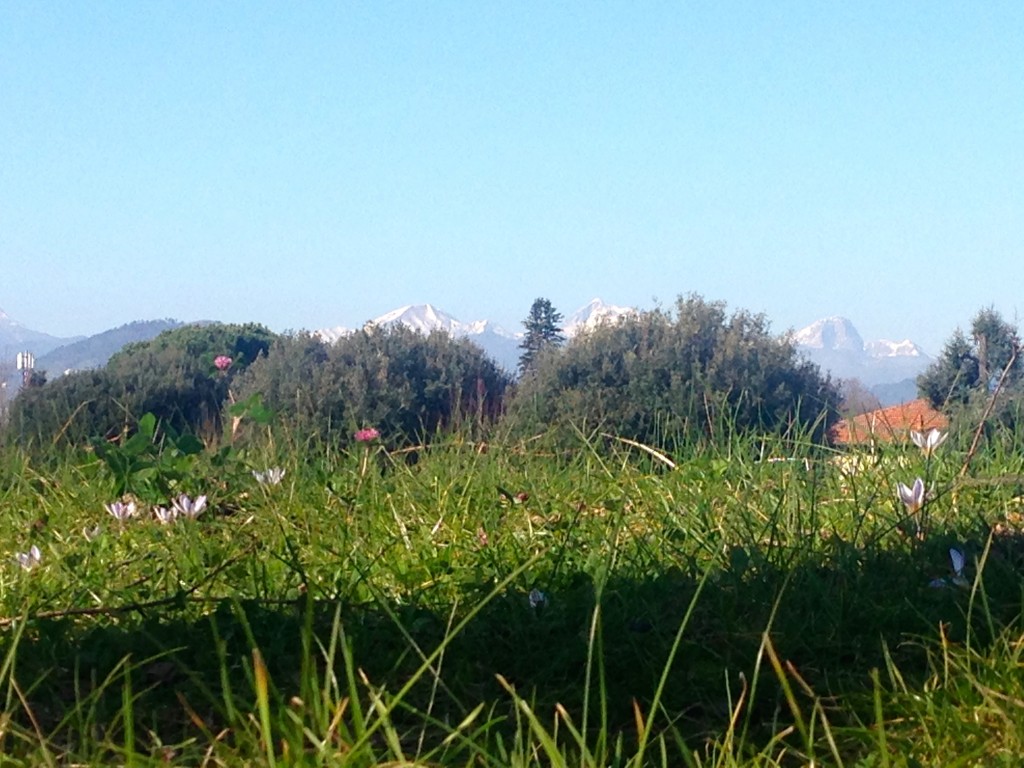
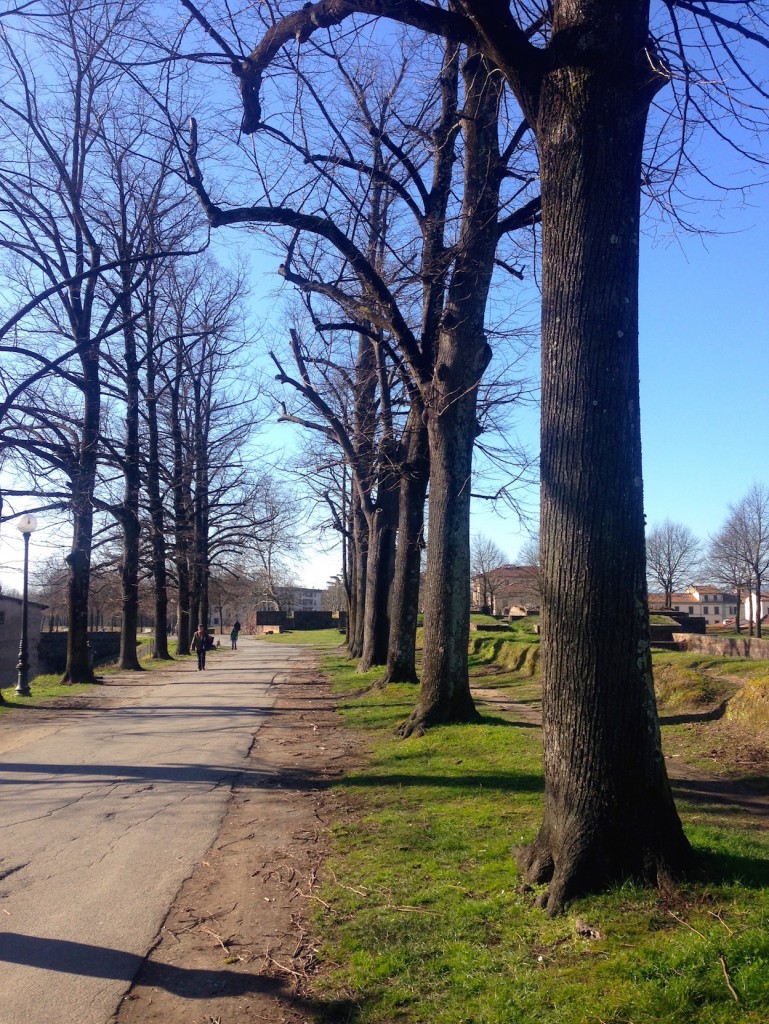
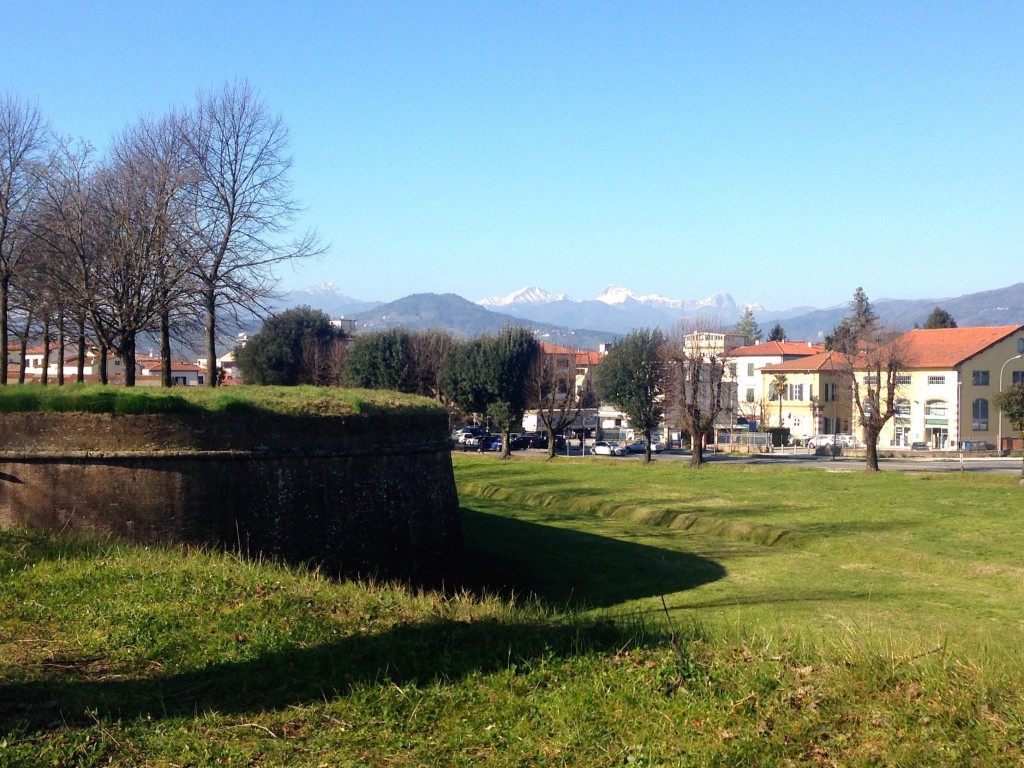
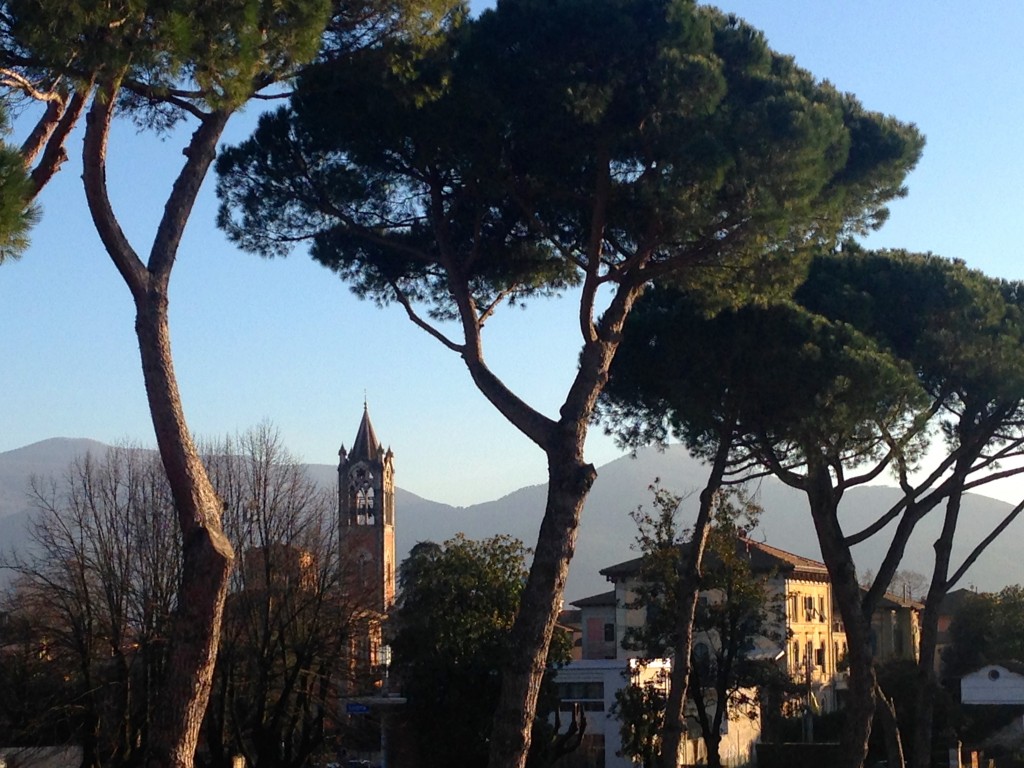
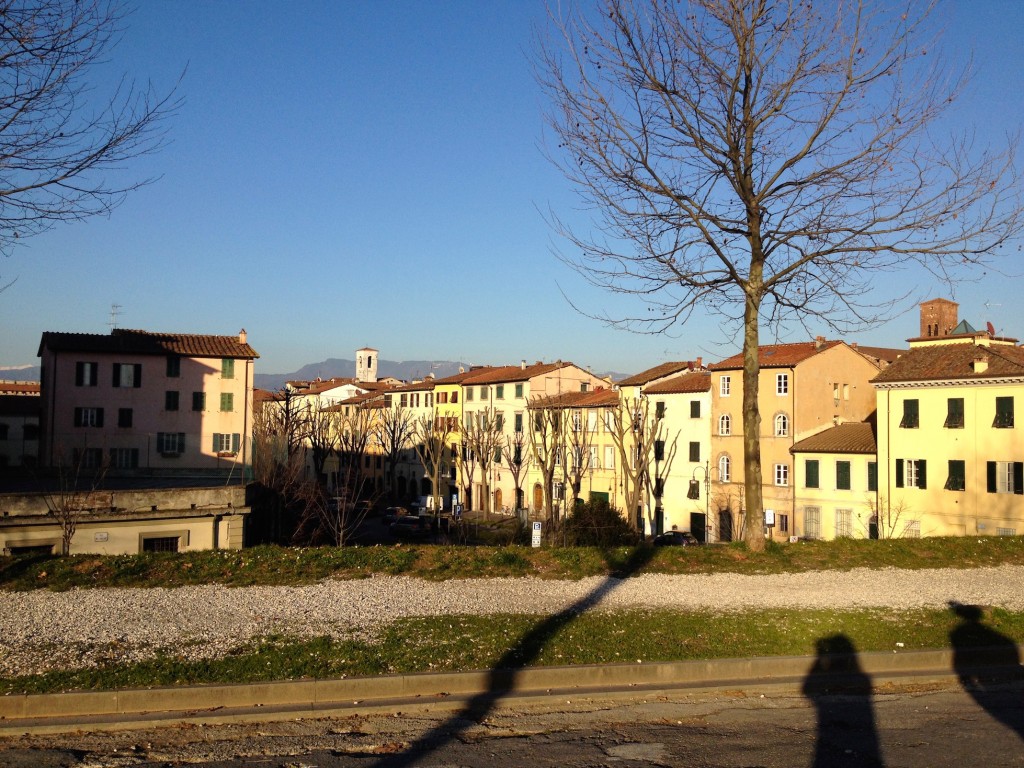
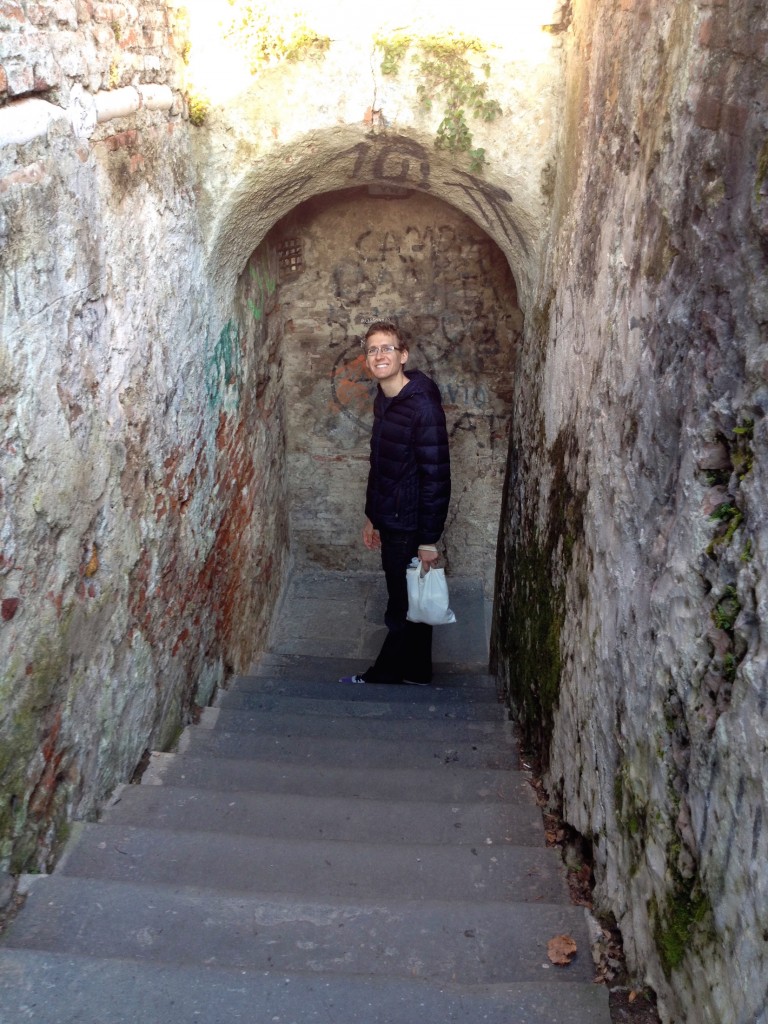
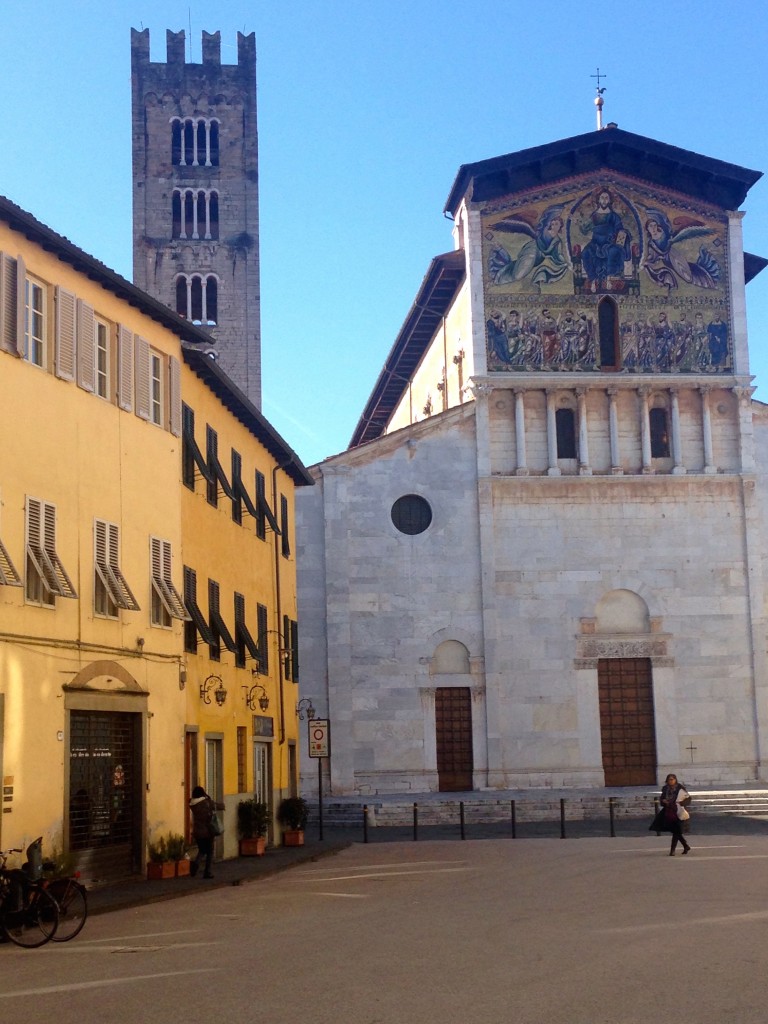
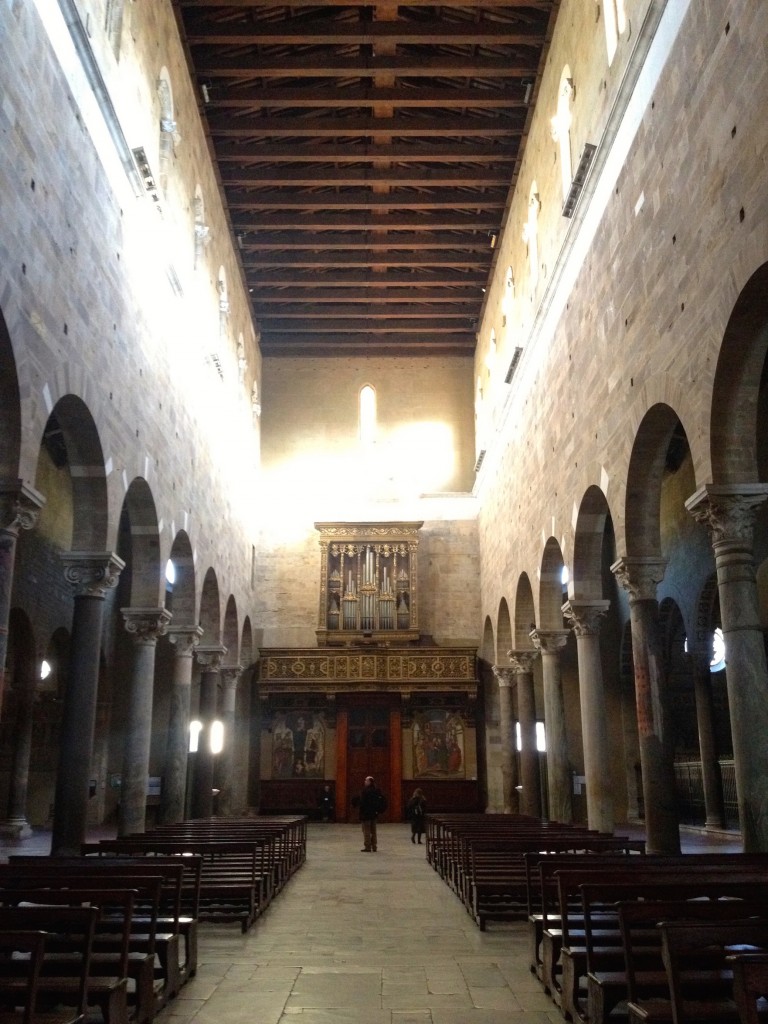
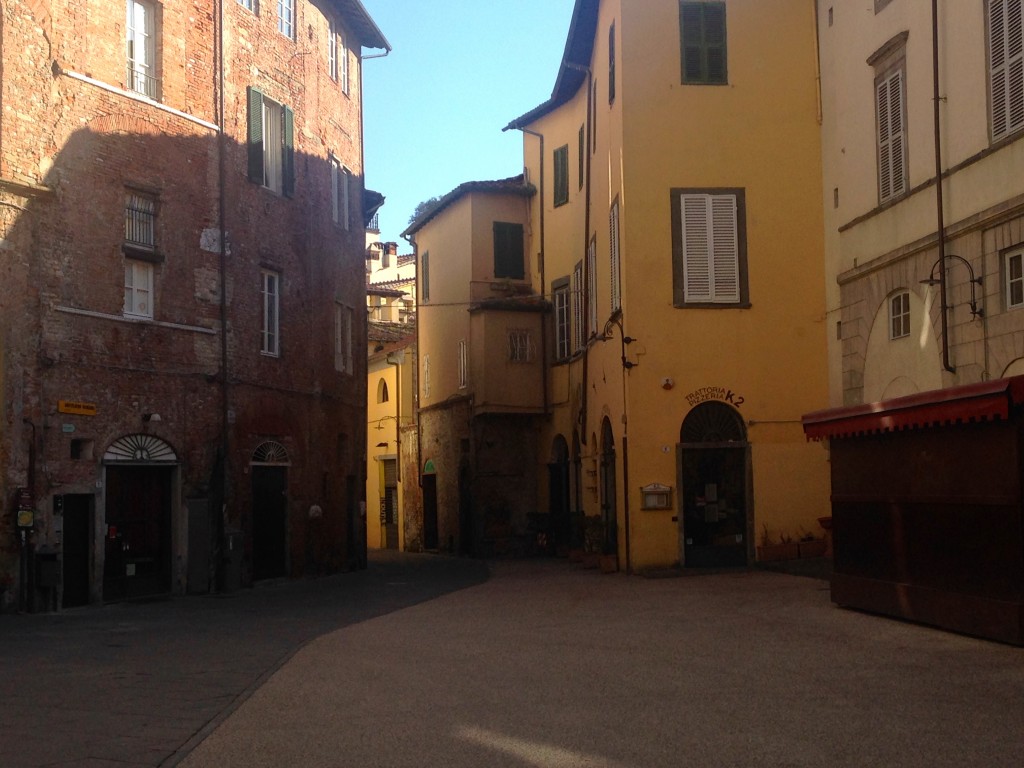
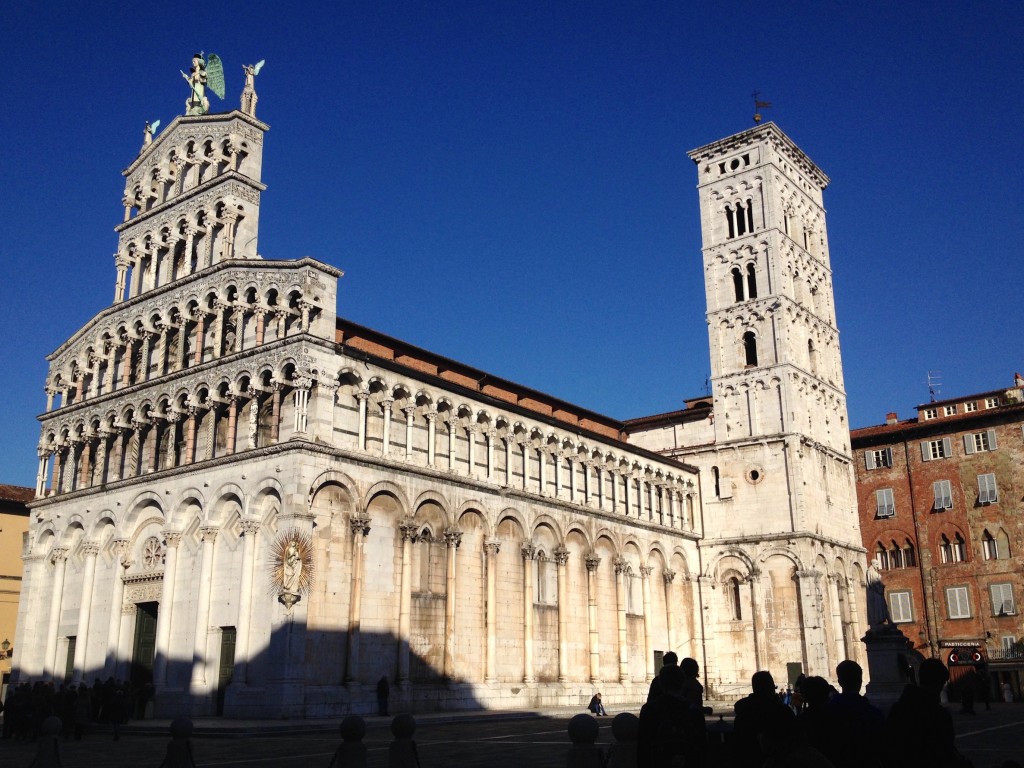
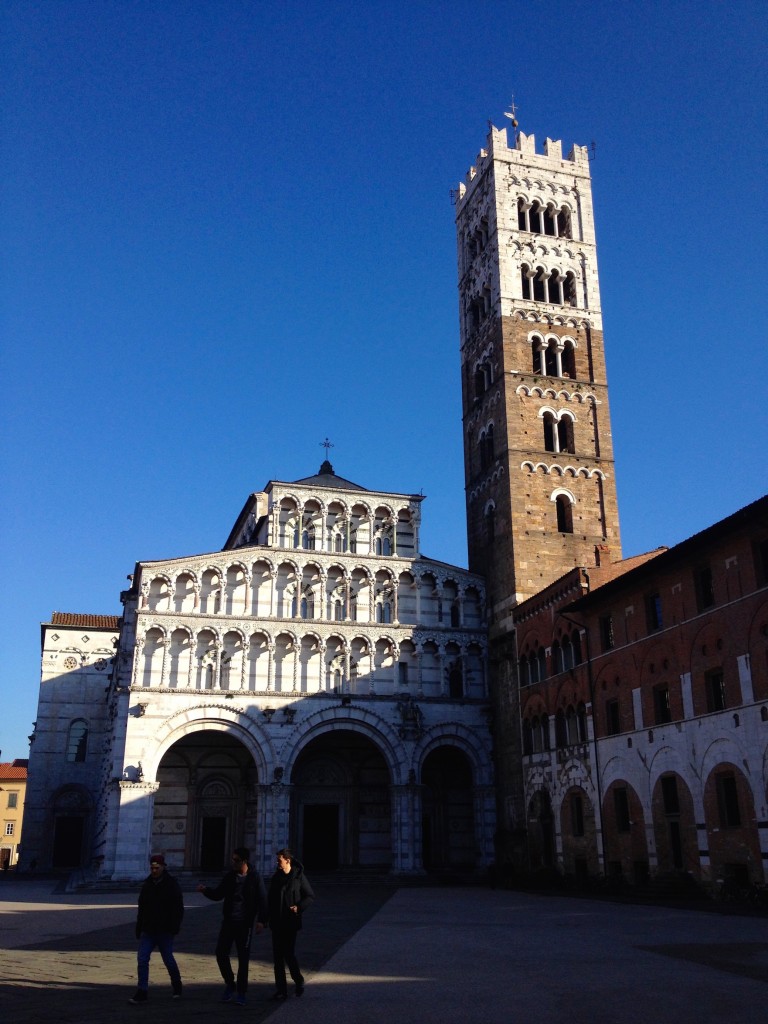
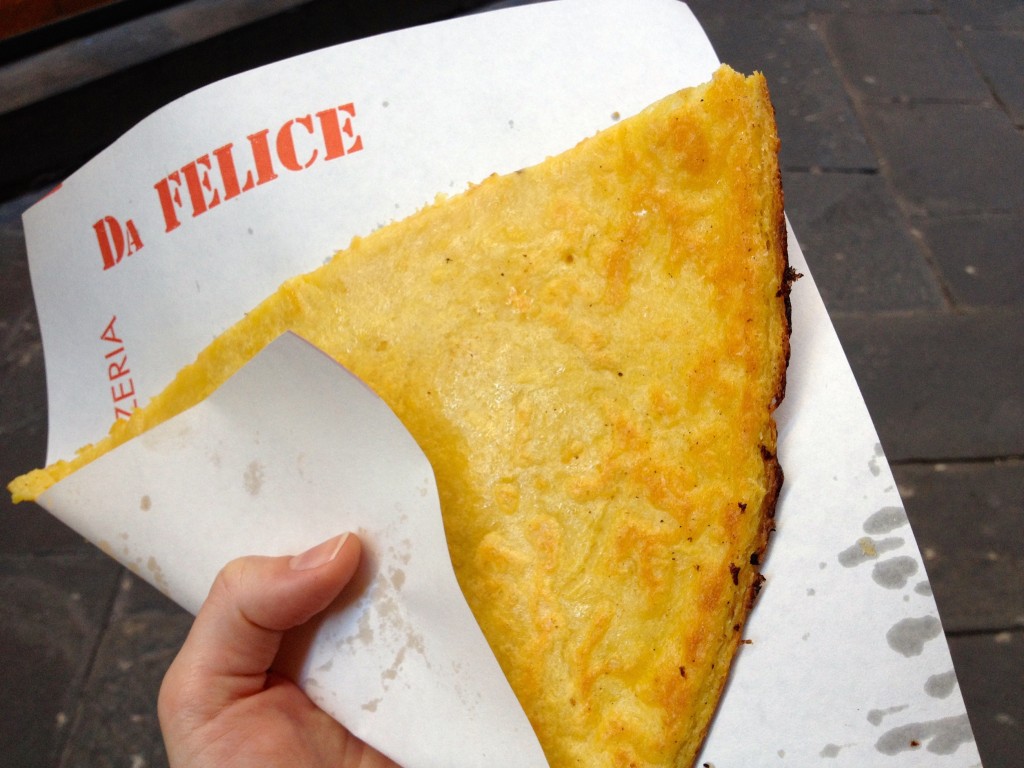
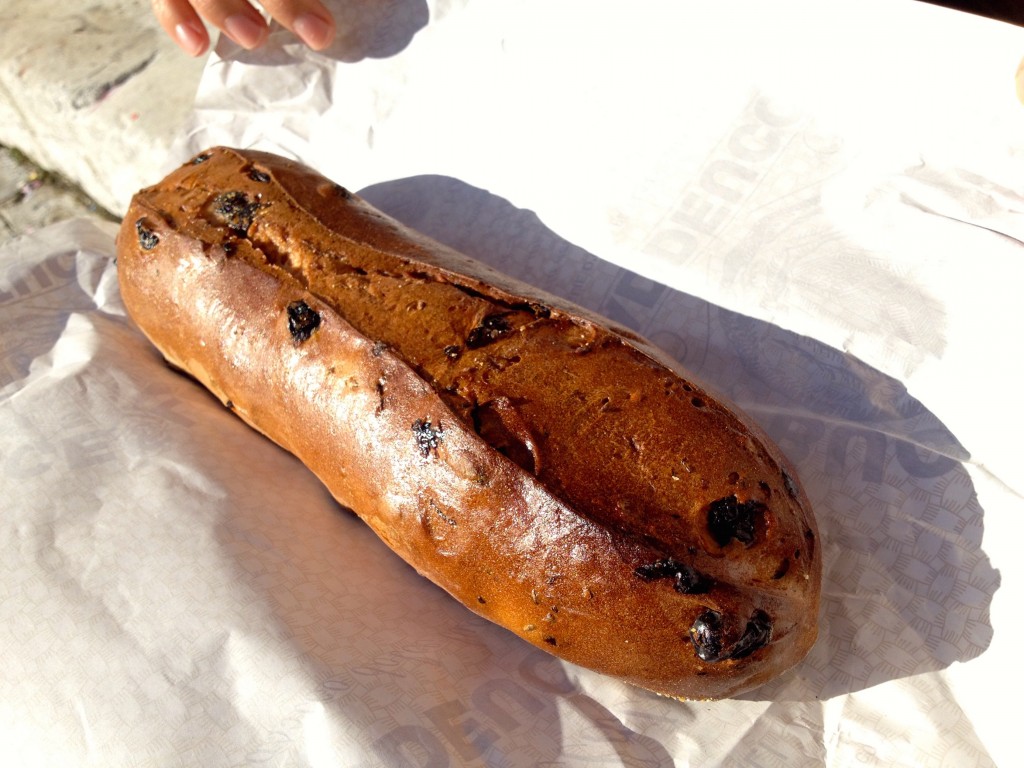
Did you travel by train from Florence to Pisa and Lucca? You bought the ticket in advance or the same day
Hi Patricia,
We bought our train ticket to Lucca the day of because it was just a day trip from Florence and we had plenty of time in Florence to try again if the train was full.
We purchased our train ticket from Pisa to Florence ahead of time since we HAD to get to Florence to check into our Airbnb.
Hope that helps! Safe & Happy travels to you,
Melanie
Could you do Pisa and Lucca in one day trip from Florence without staying overnight there? If so, which one would you start with?